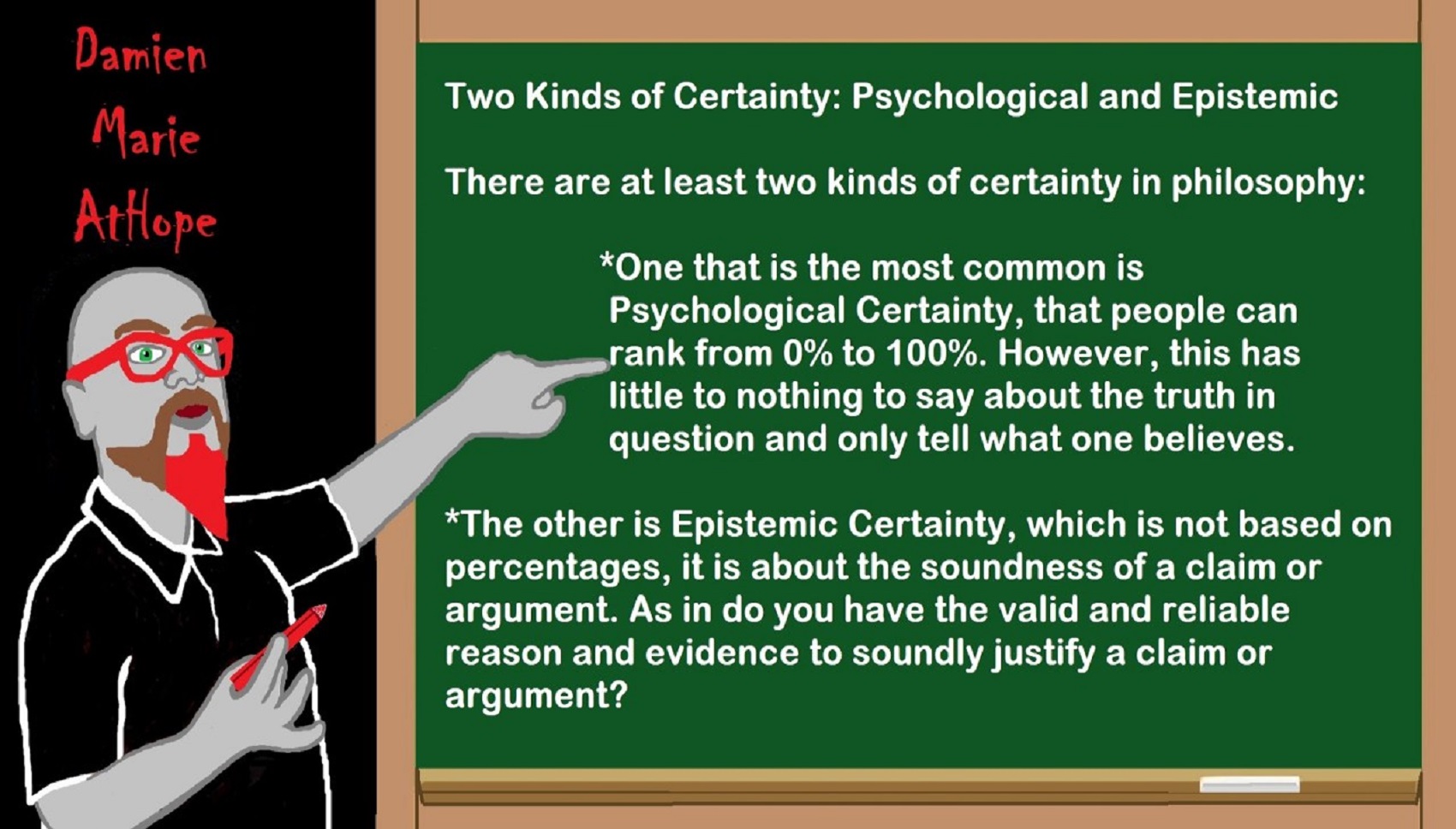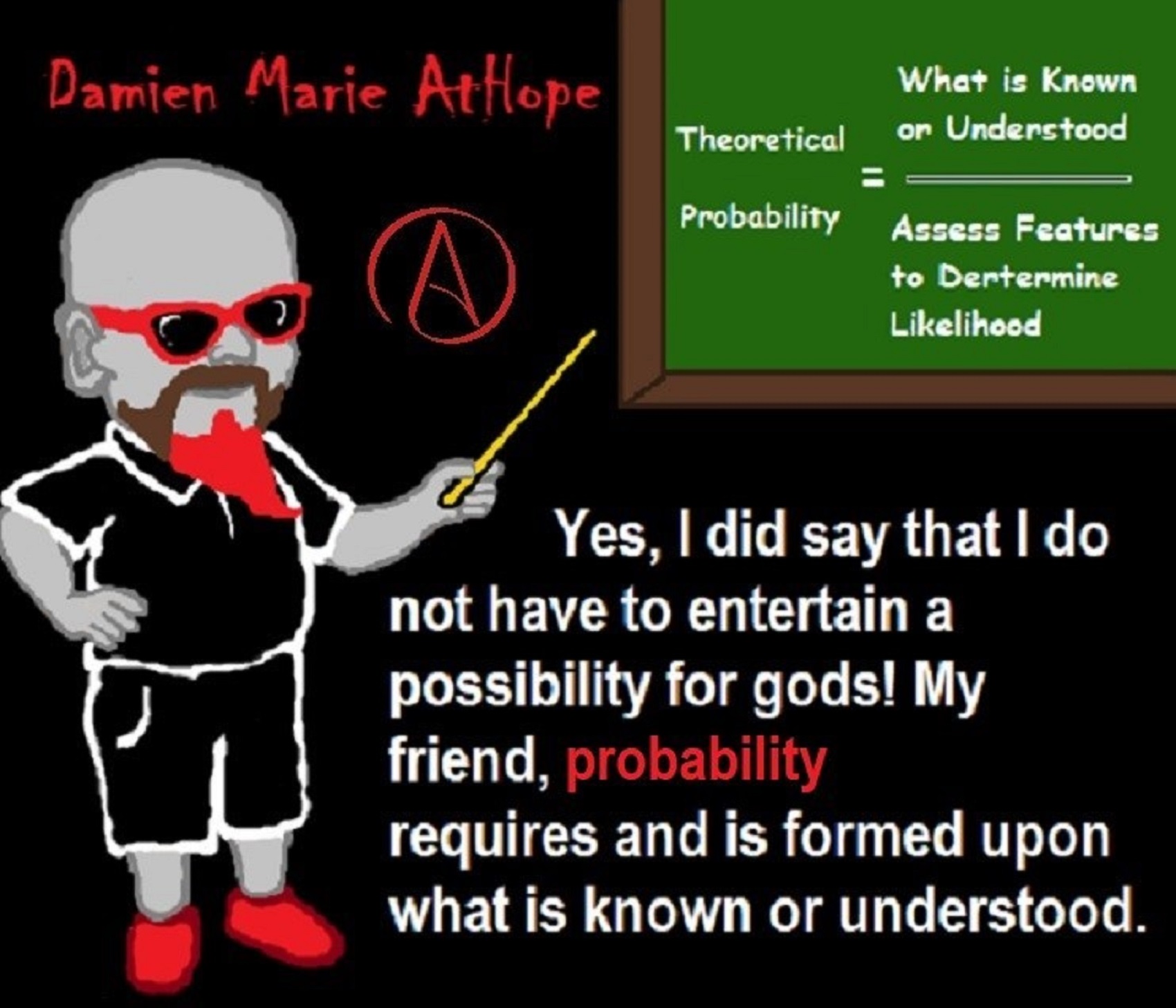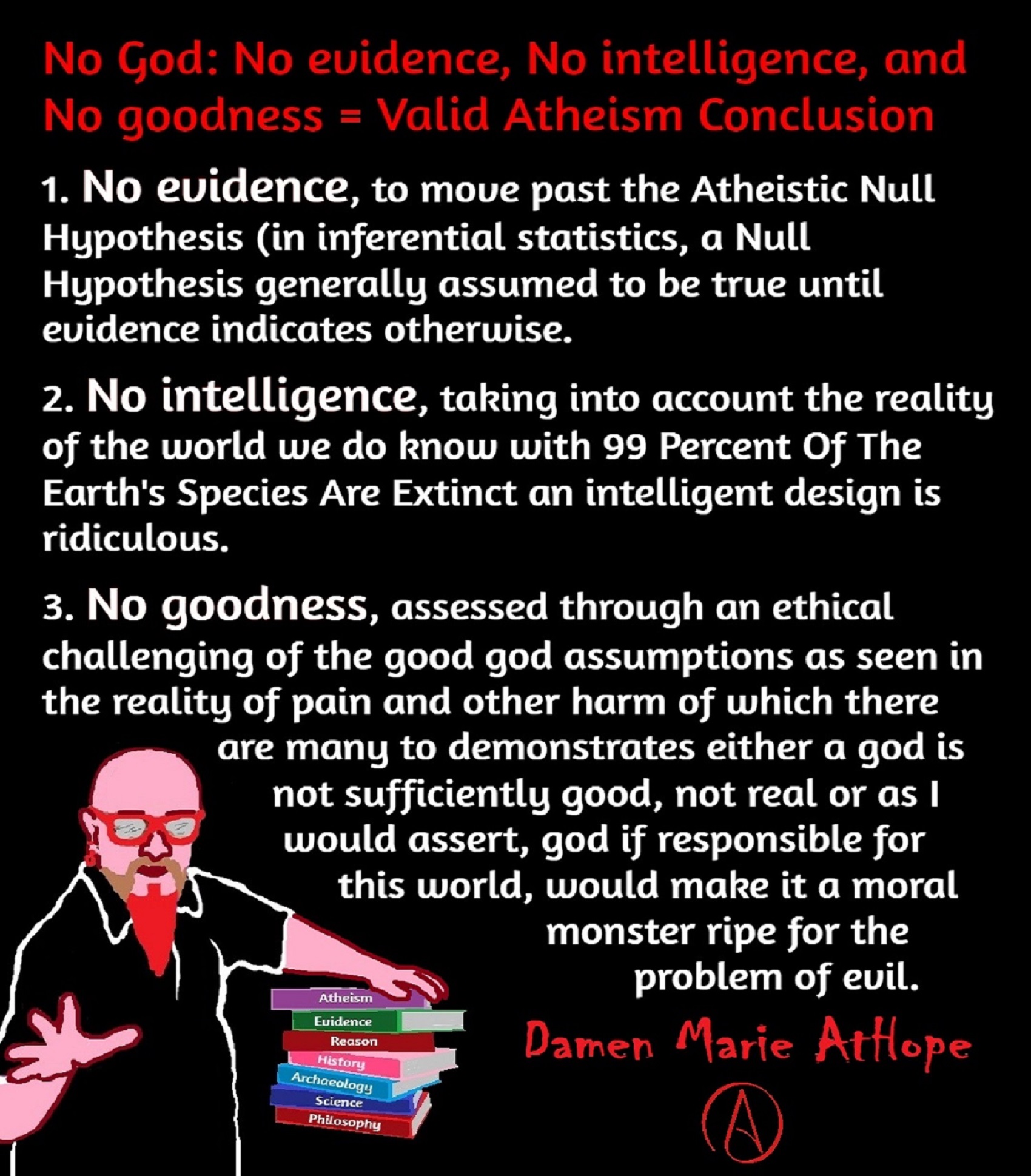
Ancient aliens theories are just idiocy, fabrications and lies. Ancient Aliens Conspiracy Theorists are Pseudohistorians. We are just earth tourists, hopeful bursts of light and joy, that flicker on and off too quickly not to hold reverent the wonder of today.
Ancient Aliens the tv show, is some of the most noxious sludge in television’s bottomless chum bucket. Actual experts are brought in to deliver sound bites that are twisted and taken out of context while fanatics are given free reign. Fiction is presented as fact, and real scientific research is so grossly misrepresented that I can only conclude that the program is actively lying to viewers. To present the show as a documentary, on a non-fiction network, is a loathsome move by the History Channel spinoff. (Technically, Ancient Aliens airs on an offshoot of the History Channel called H2.) If the network and the show’s creators want to present Ancient Aliens as a light survey of fringe ideas and make it clear that the ideas aren’t meant to be taken seriously, I can’t quarrel with that. But Ancient Aliens and shows like it winnow away at actual scientific understanding by promoting absolute dreck. Ancient Aliens is worse than bad television. The program shows a sheer contempt for science and what we really know about nature.
Zecharia Sitchin, along with Erich von Däniken and Immanuel Velikovsky, make up the holy trinity of pseudohistorians. Each begins with the assumption that ancient myths are not myths but historical and scientific texts. Sitchin’s claim to fame is announcing that he alone correctly reads ancient Sumerian clay tablets. [Of course, he didn’t announce this by taking out an ad in the New York Times but by implying it with his “translations” that do not jibe with the work of legitimate scholars in the field.] If Sitchin is right, then all other scholars have misread these tablets, which, according to Sitchin, reveal that gods from another planet (Nibiru or Niburu, which orbits our Sun every 3,600 years) arrived on Earth some 450,000 years ago and created humans by genetic engineering of female apes. Niburu orbits beyond Pluto and is heated from within by radioactive decay, according to Sitchin. No other scientist has discovered that these descendants of gods blew themselves up with nuclear weapons some 4,000 years ago (The War of Gods and Men, p. 310).* Sitchin alone can look at a Sumerian tablet and see that it depicts a man being subjected to radiation. He alone knows how to correctly translate ancient terms allowing him to discover such things as that the ancients made rockets (ibid., p. 46).* Yet, he doesn’t seem to know that the seasons are caused by the earth’s tilt, not by its distance from the sun.
One of the archaeologists at Bad Archaeology lambastes the History Channel for its series Ancient Aliens and treating its nonsense as though it were fact.
I find it incredible and frightening that a worldwide distributed television channel that bills itself as ‘The History Channel’ can broadcast such rubbish as Ancient Aliens. If it were an entertainment programme, I’d have fewer worries (although it would still make me cross); it is the implied authority of the channel (‘The History Channel’, not just any old ‘History Channel’) that makes the broadcast of this series so potentially damaging, as we saw in the reaction of the forum poster quoted above. A channel that is making claims for its authoritative status, which offers educational resources, has a responsibility not to mislead its viewers (no doubt its executives think of them as ‘customers’). That responsibility is one that all makers and broadcasters of supposedly factual television have, but one that few of them take seriously: the responsibility to check facts.
Do read the whole post, as it’s a nice one-stop shop for debunking the “ancient astronaut” nonsense that’s been peddled around for as long as I can remember. And I’m in agreement that ideally, the History Channel shouldn’t run stuff like this and instead devote itself to more stuff about, say, history. At least, the parts of history that don’t involve alien visitors.
Ps, I am not saying there could not be any possible life out there, I don’t know, it does seem likely at some point in our universe’s history or some time in the future. Though I do not believe that we have been visited by other beings.
The links that were used:
List of topics characterized as pseudoscience – Wikipedia list article
Conspiracy Theory?
“A conspiracy theory is an explanation for an event or situation that invokes a conspiracy by sinister and powerful groups, often political in motivation, when other explanations are more probable. The term has a negative connotation, implying that the appeal to a conspiracy is based on prejudice or insufficient evidence. A conspiracy theory is not the same as a conspiracy; instead, it refers to a hypothesized conspiracy with specific characteristics, such as an opposition to the mainstream consensus among those people (such as scientists or historians) who are qualified to evaluate its accuracy.” ref
“Conspiracy theories resist falsification and are reinforced by circular reasoning: both evidence against the conspiracy and an absence of evidence for it are re-interpreted as evidence of its truth, whereby the conspiracy becomes a matter of faith rather than something that can be proven or disproven. Research suggests that conspiracist ideation—belief in conspiracy theories—may be psychologically harmful or pathological and that it is correlated with lower analytical thinking, low intelligence, psychological projection, paranoia, and Machiavellianism. Psychologists attribute finding a conspiracy where there is none to a mental phenomenon called illusory pattern perception.” ref
“Historically, conspiracy theories have been closely linked to prejudice, propaganda, witch hunts, wars, and genocides. They are often strongly believed by the perpetrators of terrorist attacks, and were used as justification by Timothy McVeigh and Anders Breivik, as well as by governments such as Nazi Germany, the Soviet Union, and Turkey. AIDS denialism by the government of South Africa, motivated by conspiracy theories, caused an estimated 330,000 deaths from AIDS, QAnon, and denialism about the 2020 United States presidential election results led to the 2021 storming of the United States Capitol, while belief in conspiracy theories about genetically modified foods led the government of Zambia to reject food aid during a famine, at a time when 3 million people in the country were suffering from hunger.” ref
“Conspiracy theories are a significant obstacle to improvements in public health, encouraging opposition to vaccination and water fluoridation among others, and have been linked to outbreaks of vaccine-preventable diseases. Other effects of conspiracy theories include reduced trust in scientific evidence, radicalization and ideological reinforcement of extremist groups, and negative consequences for the economy. Conspiracy theories once limited to fringe audiences have become commonplace in mass media, emerging as a cultural phenomenon of the late 20th and early 21st centuries. They are widespread around the world and are often commonly believed, some even being held by the majority of the population. Interventions to reduce the occurrence of conspiracy beliefs include maintaining an open society and improving the analytical thinking skills of the general public.” ref
“Conspiracy theories are often commonly believed, some even being held by the majority of the population. A broad cross-section of Americans today gives credence to at least some conspiracy theories. For instance, a study conducted in 2016 found that 10% of Americans think the chemtrail conspiracy theory is “completely true” and 20-30% think it is “somewhat true”. This puts “the equivalent of 120 million Americans in the ‘chemtrails are real’ camp.” Belief in conspiracy theories has therefore become a topic of interest for sociologists, psychologists, and experts in folklore.” ref
“Conspiracy theories are widely present on the Web in the form of blogs and YouTube videos, as well as on social media. Whether the Web has increased the prevalence of conspiracy theories or not is an open research question. The presence and representation of conspiracy theories in search engine results has been monitored and studied, showing significant variation across different topics, and a general absence of reputable, high-quality links in the results.” ref
“Belief in conspiracy theories is generally based not on evidence, but in the faith of the believer. Noam Chomsky contrasts conspiracy theory to institutional analysis which focuses mostly on the public, long-term behavior of publicly known institutions, as recorded in, for example, scholarly documents or mainstream media reports. Conspiracy theory conversely posits the existence of secretive coalitions of individuals and speculates on their alleged activities. Belief in conspiracy theories is associated with biases in reasoning, such as the conjunction fallacy.” ref
“Clare Birchall at King’s College London describes conspiracy theory as a “form of popular knowledge or interpretation”.[a] The use of the word ‘knowledge’ here suggests ways in which conspiracy theory may be considered in relation to legitimate modes of knowing.[b] The relationship between legitimate and illegitimate knowledge, Birchall claims, is closer than common dismissals of conspiracy theory contend.” ref
“Theories involving multiple conspirators that are proven to be correct, such as the Watergate scandal, are usually referred to as “investigative journalism” or “historical analysis” rather than conspiracy theory. By contrast, the term “Watergate conspiracy theory” is used to refer to a variety of hypotheses in which those convicted in the conspiracy were in fact the victims of a deeper conspiracy. There are also attempts to analyze the theory of conspiracy theories (conspiracy theory theory) to ensure that the term “conspiracy theory” is used to refer to narratives that have been debunked by experts, rather than as a generalized dismissal.” ref
“Conspiracy theories are not able to be falsified and are reinforced by fallacious arguments. In particular, the logical fallacy circular reasoning is used by conspiracy theorists: both evidence against the conspiracy and an absence of evidence for it are re-interpreted as evidence of its truth, whereby the conspiracy becomes a matter of faith rather than something that can be proved or disproved. The epistemic strategy of conspiracy theories has been called “cascade logic”: each time new evidence becomes available, a conspiracy theory is able to dismiss it by claiming that even more people must be part of the cover-up. Any information that contradicts the conspiracy theory is suggested to be disinformation by the alleged conspiracy.” ref
“Similarly, the continued lack of evidence directly supporting conspiracist claims is portrayed as confirming the existence of a conspiracy of silence; the fact that other people have not found or exposed any conspiracy is taken as evidence that those people are part of the plot, rather than considering that it may be because no conspiracy exists. This strategy lets conspiracy theories insulate themselves from neutral analyses of the evidence, and makes them resistant to questioning or correction, which is called “epistemic self-insulation.” ref
“Conspiracy theorists often take advantage of false balance in the media. They may claim to be presenting a legitimate alternative viewpoint that deserves equal time to argue its case; for example, this strategy has been used by the Teach the Controversy campaign to promote intelligent design, which often claims that there is a conspiracy of scientists suppressing their views. If they successfully find a platform to present their views in a debate format, they focus on using rhetorical ad hominems and attacking perceived flaws in the mainstream account, while avoiding any discussion of the shortcomings in their own position.” ref
“The typical approach of conspiracy theories is to challenge any action or statement from authorities, using even the most tenuous justifications. Responses are then assessed using a double standard, where failing to provide an immediate response to the satisfaction of the conspiracy theorist will be claimed to prove a conspiracy. Any minor errors in the response are heavily emphasized, while deficiencies in the arguments of other proponents are generally excused.” ref
“In science, conspiracists may suggest that a scientific theory can be disproven by a single perceived deficiency, even though such events are extremely rare. In addition, both disregarding the claims and attempting to address them will be interpreted as proof of a conspiracy. Other conspiracist arguments may not be scientific; for example, in response to the IPCC Second Assessment Report in 1996, much of the opposition centered on promoting a procedural objection to the report’s creation. Specifically, it was claimed that part of the procedure reflected a conspiracy to silence dissenters, which served as motivation for opponents of the report and successfully redirected a significant amount of the public discussion away from the science.” ref
Pseudohistory?
“Pseudohistory is a form of pseudoscholarship that attempts to distort or misrepresent the historical record, often using methods resembling those used in legitimate historical research. The related term cryptohistory is applied to a pseudohistory based upon or derived from the superstitions inherent to occultism. Pseudohistory is related to pseudoscience and pseudoarchaeology and usage of the terms may occasionally overlap. Although pseudohistory comes in many forms, scholars have identified many features that tend to be common in pseudohistorical works. One such feature is that pseudohistory is nearly always motivated by a contemporary political, religious, or personal agenda. Pseudohistory also frequently presents a big lie or sensational claims about historical facts which would require the radical revision (re-writing) of the historical record.” ref
“Another very common feature of pseudohistory is the assumption that there is a conspiracy among scholars to suppress the “true” history in favor of “mainstream history”, which is commonly corroborated by elaborate conspiracy theories. Works of pseudohistory often rely exclusively on sources that appear to support the thesis being promoted while ignoring sources that contradict it. Many works of pseudohistory treat myths, legends, and other unreliable sources as literal historical truth while ignoring or dismissing evidence to the contrary. Sometimes a work of pseudohistory may adopt a position of extreme skepticism, sometimes insisting that there is really no such thing as historical truth and that any hypothesis is just as good as any other. Many works of pseudohistory conflate mere possibility with actuality, assuming that if something could have happened, then it did.” ref
“Robert Todd Carroll has developed a list of criteria to identify pseudo-historic works. He states that Pseudohistory is purported history which:
- Treats myths, legends, sagas and similar literature as literal truth
- Is neither critical nor skeptical in its reading of ancient historians, taking their claims at face value and ignoring empirical or logical evidence contrary to the claims of the ancients
- Is on a mission, not a quest, seeking to support some contemporary political or religious agenda rather than find out the truth about the past
- Often denies that there is such a thing as historical truth, clinging to the extreme skeptical notion that only what is absolutely certain can be called ‘true’ and nothing is absolutely certain, so nothing is true
- Often maintains that history is nothing but mythmaking and that different histories are not to be compared on such traditional academic standards as accuracy, empirical probability, logical consistency, relevancy, completeness, fairness or honesty, but on moral or political grounds
- Is selective in its use of ancient documents, citing favorably those that fit with its agenda, and ignoring or interpreting away those documents which do not fit
- Considers the possibility of something being true as sufficient to believe it is true if it fits with one’s agenda
- Often maintains that there is a conspiracy to suppress its claims because of racism, atheism or ethnocentrism, or because of opposition to its political or religious agenda” ref
“Nicholas Goodrick-Clarke prefers the term “cryptohistory”. He identifies two necessary elements as “a complete ignorance of the primary sources” and the repetition of “inaccuracies and wild claims.” ref
“Other common characteristics of pseudohistory are:
- The arbitrary linking of disparate events so as to form – in the theorist’s opinion – a pattern. This is typically then developed into a conspiracy theory postulating a hidden agent responsible for creating and maintaining the pattern. For example, the pseudohistorical The Holy Blood and the Holy Grail links the Knights Templar, the medieval Grail Romances, the Merovingian Frankish dynasty and the artist Nicolas Poussin in an attempt to identify lineal descendants of Jesus.
- Hypothesising the consequences of unlikely events that “could” have happened, thereby assuming tacitly that they did.
- Sensationalism, or shock value
- Cherry picking evidence that helps the historical argument being made and suppressing evidence that hurts it.” ref
The Pseudohistory of Ancient aliens, ancient technologies, and lost lands
“In 1968, Erich von Däniken published Chariots of the Gods?, which claims that ancient visitors from outer space constructed the pyramids and other monuments. He has since published other books in which he makes similar claims. These claims have all been categorized as pseudohistory. Similarly, Zechariah Sitchin has published numerous books claiming that a race of extraterrestrial beings from the Planet Nibiru known as the Anunnaki visited Earth in ancient times in search of gold, and that they genetically engineered humans to serve as their slaves. He claims that memories of these occurrences are recorded in Sumerian mythology, as well as other mythologies all across the globe. These speculations have likewise been categorized as pseudohistory.” ref
“The ancient astronaut hypothesis was further popularized in the United States by the History Channel television series Ancient Aliens. History professor Ronald H. Fritze observed that the pseudohistorical claims promoted by von Däniken and the Ancient Aliens program have a periodic popularity in the US: “In a pop culture with a short memory and a voracious appetite, aliens and pyramids and lost civilizations are recycled like fashions.” ref
“The author Graham Hancock has sold over four million copies of books promoting the pseudohistorical thesis that all the major monuments of the ancient world, including Stonehenge, the Egyptian pyramids, and the moai of Easter Island, were built by a single ancient supercivilization, which Hancock claims thrived from 15,000 to 10,000 BC and possessed technological and scientific knowledge equal to or surpassing that of modern civilization. He first advanced the full form of this argument in his 1995 bestseller Fingerprints of the Gods, which won popular acclaim, but scholarly disdain. Christopher Knight has published numerous books, including Uriel’s Machine (2000), expounding pseudohistorical assertions that ancient civilizations possessed technology far more advanced than the technology of today. The claim that a lost continent known as Lemuria once existed in the Pacific Ocean has likewise been categorized as pseudohistory.” ref
Ancient Astronauts (or “Spacemen”) Beliefs
“Ancient astronauts” (or “ancient aliens“) refers to the hypothesis, often presented in a pseudoscientific way, that intelligent extraterrestrial beings visited Earth and made contact with humans in antiquity and prehistoric times. Proponents suggest that this contact influenced the development of modern cultures, technologies, religions, and human biology. A common position is that deities from most, if not all, religions are extraterrestrial in origin, and that advanced technologies brought to Earth by ancient astronauts were interpreted as evidence of divine status by early humans.” ref
“The hypothesis that ancient astronauts existed and allegedly visited Earth is not taken seriously by most academics and archaeologists, which consider it to be pseudoarchaeological and/or unscientific, and has received no credible attention in peer reviewed studies. When proponents of the idea present evidence in favor of their beliefs, it is often distorted or fabricated. Well-known ancient astronauts proponents in the latter half of the 20th century who have written numerous books or appear regularly in mass media include Erich von Däniken, Graham Hancock, Zecharia Sitchin, Robert K. G. Temple, Giorgio A. Tsoukalos, and David Hatcher Childress.” ref
“Proponents of the ancient astronaut hypothesis often maintain that humans are either descendants or creations of extraterrestrial intelligence (ETI) who landed on Earth thousands of years ago. An associated idea is that humans evolved independently, but that much of human knowledge, religion, and culture came from extraterrestrial visitors in ancient times, in that ancient astronauts acted as a “mother culture.” ref
“Some ancient astronaut proponents also believe that travelers from outer space, referred to as “astronauts” (or “spacemen”) built many of the structures on Earth (such as Egyptian pyramids and the Moai stone heads of Easter Island) or aided humans in building them. Various terms are used to reference claims about ancient astronauts, such as ancient aliens, ancient ufonauts, ancient space pilots, paleocontact, astronaut- or alien gods, or paleo- or Bible-SETI (search for extraterrestrial intelligence).” ref
“Pseudoarchaeology and the Racism Behind Ancient Aliens”
At the ancient site of Hatnub, a quarry in the eastern Egyptian desert not far from Faiyum, archaeologists have recently discovered a sled ramp system used to transport alabaster blocks. Post holes and a ramp with stairs on either side indicate that the contraption allowed Egyptian builders to move heavy blocks up and down steep slopes. Inscriptions have now helped archaeologists from the Institut français d’archéologie orientale and the University of Liverpool to date this groundbreaking technology to at least the reign of Khufu, who ruled from 2589–2566 BCE. Khufu is known as the pharaoh who likely commissioned the building of the Great Pyramid at Giza.” ref
“Discovery and reconstruction of the ramp allows us to better understand ancient construction techniques. It also chips away at the long-held but fringe theory that the blocks were so heavy and the distances they would have to travel so lengthy that aliens must have built the pyramids. Where did the theory of aliens building the pyramids actually come from? Since the late 19th century, science fiction writers have imagined Martians and other alien lifeforms engaged in great feats of terrestrial engineering. Earlier alien theories surrounding Atlantis may have spawned fantasies about alien building. The most substantial evidence for non-earthly creatures arrived in the wake of H.G. Wells’s success.” ref
“Capitalizing on the fervor surrounding Wells’s The War of the Worlds, astronomer and science fiction writer Garrett P. Serviss penned a quasi-sequel titled Edison’s Conquest of Mars in 1898. Serviss posited that “giants of Mars” had moved large blocks and built the Great Pyramid. He even noted that the Sphinx had Martian features. Edison’s Conquest was part of a number of science fiction works published as books or serialized in newspapers in the late 19th century which imagined alien invasions fought off by great inventors of the time. Thomas Edison was a favored hero in these science fiction fantasies much later collectively called Edisonades.” ref
“The popularization of the theory of alien architects as having a basis in science rather than consisting of only fictional musing can be attributed to Swiss author Erich von Däniken’s 1968 publication of the book Chariots of the Gods? Unsolved Mysteries of the Past. Originally published in German and subsequently translated into English, it was one of the first popularly sold books to suggest that extraterrestrial life forms, not humans, built structures associated with our ancient civilizations. In 1966, Carl Sagan and Iosif S. Shklovskii had already speculated that contact with extraterrestrials might have occurred in their book Intelligent Life in the Universe, but von Däniken took this theory to new levels.” ref
“The 50th anniversary of that book’s publication in 2018 with over 65 million books sold to date. While its ideas might be laughable to most, the creation of doubt is a pernicious and rhetorical agent. The questioning of human building projects in Chariots of the Gods? remains a bedrock for many within the field of pseudo-archaeology. Far from innocuous, these alien theories undermine the agency, archaeology, and intellect of non-European cultures in Africa and South America, as well as the Native peoples in North America by erasing their achievements.” ref
“A potent combination of tabloids and television helped to make von Däniken’s book a bestseller in the United States. Historian of pseudoscience John Colavito has remarked that while the book became a bestseller in Europe, it was the National Enquirer’s underscoring of von Däniken’s work through a serial series published in the tabloid that introduced it to readers in the US in 1970. Three years later, NBC aired an adaption of the book retitled In Search of Ancient Astronauts (featuring a cast of all white men) which translated and visualized pseudo-theories of archaeology and science for broad popular consumption.” ref
“It is notable that many (though not all) extraterrestrial theories focus on archaeological structures at sites within Egypt, Africa, South America, and North America — a fact that has led some academics to see beliefs in ancient alien engineers as a stalking horse for racism. In a piece for the online journal The Conversation rather frankly titled “Racism is Behind Outlandish Theories about Africa’s Ancient Architecture,” Julien Benoit, a postdoctoral researcher in vertebrate paleontology at the University of the Witwatersrand (South Africa), addressed the continued harm of these theories:
Firstly, these people try to prove their theories by travelling the world and desecrating ancient artefacts. Secondly, they perpetuate and give air to the racist notion that only Europeans – white people – ever were and ever will be capable of such architectural feats.” ref
“Belief can indeed lead to action. In 2014, German pseudoscientists and “hobbyists” defaced a cartouche of Khufu inside the Great Pyramid in their misguided search to prove their alien theories. The Pyramids of Giza and the Great Zimbabwe site are commonly cited by pseudo-archaeologists as structures built by extraterrestrial beings, along with the Moai heads on the tiny Easter Island off the coast of Chile.” ref
“Stonehenge, in the English countryside of Wiltshire, is one of the few structures built by European ancestors placed in this category structures allegedly built by aliens, though in the original printing of Chariots of the Gods? von Däniken does not discuss the site any more than to say its massive stone blocks were from Wales and Marlborough. The disproportion of speculation surrounding non-European versus European structures is noticeable. As medieval historian Chris Reidel noted,
That’s what the ancient aliens theory does: it discredits the origins of civilizations, and almost entirely of non-white civilizations. People may suggest Stonehenge was built by aliens — but do the[y] suggest the Roman Forum or Parthenon were? No.” ref
“We must question what is at stake in these cases. While the British are not in any danger of having their overall intellect or capability as a culture questioned, many non-European cultures are historically more vulnerable to such questioning. If we look to von Däniken’s work, there can be little doubt that his racial beliefs influenced his extraterrestrial theories. After a short stint in jail for fraud and either writing or appropriating the material for a number of other books that developed his ancient astronauts theory, von Däniken published Signs of the Gods? in 1979.” ref
“It is here that many of his racial views are most boldly stated. British archaeology officer Keith Fitzpatrick-Matthews points out on his Bad Archaeology blog just a few of the many racist questions and statements posed by the author: “Was the black race a failure and did the extraterrestrials change the genetic code by gene surgery and then programme a white or a yellow race?” He also printed beliefs about the innate talents of certain races: “Nearly all negroes are musical; they have rhythm in their blood.” Von Däniken also consistently uses the term “negroid race” in comparison with “Caucasians.” ref
“What does it mean to deny a non-Western civilization their accomplishments? As Everisto Benyera, a lecturer in the Department of Political Sciences at the University of South Africa, has noted, these “Western denialists” prefer to revoke agency and skill from ancient Egyptians or the Shona people of the Bantu civilization, rather than recognize their intellectual ownership of these structures. In a chapter addressing “Colonialism, the Theft of History and the Quest for Justice for Africa,” Dr. Benyera remarked:
Western denialists would rather attribute the Great Zimbabwe to aliens, who do not exist, than attribute them to the Shona people and the Africans who exist and who built them. The denial of the Shona people of their intellectual ownership, among others of the Great Zimbabwe, Khami ruins, is theft of history.” ref
“And while many may consider theories of ancient aliens to be an outlandish and ultimately harmless belief or meme, Benyera points out that there is an extant spectrum of western denialism whose occupants seek to rescind and reallocate great accomplishments from African civilizations in particular.” ref
“To Benyera, one example of western denialism lies in the writings of the historian Niall Ferguson. Benyera notes that Ferguson underscores the colonial gifts of parliamentary democracy and the English language to the countries that they colonized in his book Empire: How Britain Made the Modern World. Like von Däniken, Ferguson’s views have been disseminated by television shows. A six-part series also called Empire: How Britain Made the Modern World aired on Channel 4, ostensibly to hype the book’s release. Arguing that aliens brought magnificent structures to many African civilizations erases accomplishments, but so does arguing that colonizers brought gifts (rather than imposed obligations) upon the nations they colonized.”
Colonization coded as the gift of civilization remains an entrenched defense of colonialism. In recent years, academics have increasingly called foul on alien theories as cultural erasures outside of Africa as well. A year ago, Christopher Heaney, a professor of Latin American history at Pennsylvania State University, wrote an article addressing the racism behind notions that Pre-Columbian bodies were evidence for extraterrestrial life. Others have sought to dispel the racist theories surrounding Native mound-building cultures.” ref
“In comments to Hyperallergic, Morag Kersel, an archaeologist at DePaul University, noted the connection between ancient aliens and the idea that an ancient and superior race had originally built mounds like those at Cahokia in southern Illinois. The myth supported racist policies and has done lasting damage.” ref
“It’s an extension of the 19th-century myth of the mound builder. No way could the North American mounds and artifacts have been made by people of the First Nations, it had to be an “alien” (non-local) race. Rather than set up a white supremacy model, which may have not been as popular, von Däniken takes the “alien” further to “aliens” from outer space.” ref
“Kersel noted that the use of pseudoscience revoking the accomplishments of Native American cultures is a sad part of American history. Journalist Alexander Zaitchik pointed out in an article for the Southern Poverty Law Center that there was widespread popularity and belief in the “Lost Race of the Mound Builders” in 19th century America. It was used by Andrew Jackson and others to undermine the intellect and abilities of Native peoples as we removed them from their native lands.” ref
“Today, many of von Däniken’s theories can still be found in television shows like Ancient Aliens on the History Channel. Since 2009, the show has featured a mix of mostly white male conspiracy theorists posing harmful questions about the legitimacy of human involvement in archaeological structures. As of recently, they have at least begun to incorporate actual Egyptians such as Ramy Romany. Despite his history of racist views, Von Däniken appears to still be a paid producer on the show Ancient Aliens.” ref
‘Most Egyptologists see shows like Ancient Aliens as a program that capitalizes on the bizarre rather than endeavoring to be out-and-out racist. In comments to Hyperallergic, Salima Ikram, distinguished university professor and Egyptology unit head at the American University in Cairo, noted that even Egyptians viewing the History Channel find the program more fantastical than factual: “I think that often it is more that people want the extraordinary and the bizarre, and do not want anything too real, as they crave the fantastic — look at the types of films being made and their popularity.” For most watching these programs, they are indeed about escapism through conspiracy theories — and internet memes.” ref
“For others, the attraction to books and television touting ancient alien conspiracies may be a bit more racially motivated. In comments to Hyperallergic, Robert Cargill, an assistant professor of Religious Studies and Classics at the University of Iowa who also served as an academic counterbalance on a number of episodes of Ancient Aliens, discussed the role of the program in supporting racist ideas of ancient capability:
There is an underlying ethnic bias against people of color that many white people don’t even recognize when the magnificent achievements of the ancient world are attributed to aliens instead of to their rightful creators — the ancestors of modern Egyptians, Iraqis, Guatemalans, Peruvians, etc. This is not to say that belief in ancient alien theory makes one racist. However, attributing the achievements of the forerunners of darker-skinned peoples to aliens because you believe they couldn’t have possibly done it themselves might be perceived as racists to the people of color who descend from these ancient innovators.” ref
“As Cargill and many other right-minded academics now make clear, the necessity for scientists, archaeologists, and academics, in general, to talk to the public about the ethnic biases of pseudoscience is becoming ever more apparent. In 2015, bioarchaeologist Kristina Killgrove already discussed the need for archaeologists to dispel pseudoscientific myths through public outreach. Public-facing scholarship in the humanities and STEM fields can serve as strong rebuttals to pseudoscientific narratives broadcast on television and online.” ref
“In the 50th-anniversary edition of Chariots of the Gods? was published along with a new foreword and afterward by the author. Yet it is notable that the punctuation that originally posed the book’s title as a question has now been removed. The title stands more as a statement than a question, but it is up to archaeologists, historians, and the public to continue to interrogate the insidious arguments that it contains.” ref
“Ancient astronauts proponents”
C
“Pseudohistorians”
B
C
D
H
K
L
M
P
R
S
W
Ancient Astronauts Hypothesis of Creation?
“Proponents argue that the evidence for ancient astronauts comes from documentary gaps in historical and archaeological records, and they also maintain that absent or incomplete explanations of historical or archaeological data point to the existence of ancient astronauts. The evidence is argued to include archaeological artifacts that they deem anachronistic, or beyond the accepted technical capabilities of the historical cultures with which they are associated. These are sometimes referred to as “out-of-place artifacts“; and include artwork and legends which are interpreted in a modern sense as depicting extraterrestrial contact or technologies.” ref
“Scholars have responded that gaps in contemporary knowledge are not evidence of the existence of ancient astronauts, and that advocates have not provided any convincing documentary or physical evidence of an artifact that might conceivably be the product of ETI contact. According to astrophysicist Carl Sagan, “In the long litany of ‘ancient astronaut’ pop archaeology, the cases of apparent interest have perfectly reasonable alternative explanations, or have been misreported, or are simple prevarications, hoaxes, and distortions.” ref
“Paleocontact or “ancient astronaut” narratives first appeared in the early science fiction of the late 19th to early 20th century. The idea was proposed in earnest by Harold T. Wilkins in 1954; it received some consideration as a serious hypothesis during the 1960s mainly due to Erich von Däniken. Critics emerged throughout the 1970s, discrediting Von Daniken’s claims. Ufologists separated the idea from the UFO controversy. By the early 1980s little remaining support could be found.” ref
“In Intelligent Life in the Universe (1966) astrophysicists Iosif Shklovsky [Shklovskii] and Carl Sagan devote a chapter to the argument that scientists and historians should seriously consider the possibility that extraterrestrial contact occurred during recorded history; however, Shklovskii and Sagan stressed that these ideas were speculative and unproven. Shklovskii and Sagan argued that sub-lightspeed interstellar travel by extraterrestrial life was a certainty when considering technologies that were established or feasible in the late 1960s; that repeated instances of extraterrestrial visitation to Earth were plausible; and that pre-scientific narratives can offer a potentially reliable means of describing contact with aliens.” ref
“Sagan illustrates this hypothesis by citing the 1786 expedition of French explorer Jean-François de Galaup, comte de La Pérouse, which made the earliest first contact between European and Tlingit cultures. The contact story was preserved as an oral tradition by the preliterate Tlingit. Over a century after its occurrence it was then recorded by anthropologist George T. Emmons. Although it is framed in a Tlingit cultural and spiritual paradigm, the story remained an accurate telling of the 1786 encounter. According to Sagan, this proved how “under certain circumstances, a brief contact with an alien civilization will be recorded in a re-constructible manner. He further states that the reconstruction will be greatly aided if 1) the account is committed to written record soon after the event; 2) a major change is effected in the contacted society; and 3) no attempt is made by the contacting civilization to disguise its exogenous nature.” ref
“Additionally, Shklovskii and Sagan cited tales of Oannes, a fishlike being attributed with teaching agriculture, mathematics, and the arts to early Sumerians, as deserving closer scrutiny as a possible instance of paleocontact due to its consistency and detail. In his 1979 book Broca’s Brain, Sagan suggested that he and Shklovskii might have inspired the wave of 1970s ancient astronaut books, expressing disapproval of “von Däniken and other uncritical writers” who seemingly built on these ideas not as guarded speculations but as “valid evidence of extraterrestrial contact.” Sagan argued that while many legends, artifacts, and purported out-of-place artifacts were cited in support of ancient astronaut hypotheses, “very few require more than passing mention” and could be easily explained with more conventional hypotheses. Sagan also reiterated his earlier conclusion that extraterrestrial visits to Earth were possible but unproven, and improbable.” ref
Erich von Däniken
“Erich von Däniken was a leading proponent of this hypothesis in the late 1960s and early 1970s, gaining a large audience through the 1968 publication of his best-selling book Chariots of the Gods? and its sequels. According to von Däniken, certain artifacts require a more sophisticated technological ability in their construction than that which was available to the ancient cultures who constructed them. Von Däniken maintains that these artifacts were constructed either directly by extraterrestrial visitors or by humans who learned the necessary knowledge from said visitors. These include Stonehenge, Pumapunku, the Moai of Easter Island, the Great Pyramid of Giza, and the ancient Baghdad electric batteries.” ref
“Von Däniken writes that ancient art and iconography throughout the world illustrates air and space vehicles, non-human but intelligent creatures, ancient astronauts, and artifacts of an anachronistically advanced technology. Von Däniken also states that geographically separated historical cultures share artistic themes, which he argues imply a common origin. One such example is von Däniken’s interpretation of the sarcophagus lid recovered from the tomb of the Classic-era Maya ruler of Palenque, Pacal the Great. Von Däniken writes that the design represented a seated astronaut. The iconography and accompanying Maya text, however, identifies it as a portrait of the ruler himself with the World Tree of Maya mythology.” ref
“The origins of many religions are interpreted by von Däniken as reactions to encounters with an alien race. According to his view, humans considered the technology of the aliens to be supernatural and the aliens themselves to be gods. Von Däniken states that the oral and written traditions of most religions contain references to alien visitors in the way of descriptions of stars and vehicular objects travelling through air and space. One such is Ezekiel‘s revelation in the Old Testament, which Däniken interprets as a detailed description of a landing spacecraft (The Spaceships of Ezekiel).” ref
“Von Däniken’s hypotheses became popularized in the U.S. after the NBC-TV documentary In Search of Ancient Astronauts hosted by Rod Serling, and the film Chariots of the Gods. Critics argue that von Däniken misrepresented data, that many of his claims were unfounded, and that none of his core claims have been validated. In particular, the Christian creationist community is highly critical of most of von Däniken’s work. Young Earth creationist author Clifford A. Wilson published Crash Go the Chariots in 1972 in which he attempted to discredit all the claims made in Chariots of the Gods.” ref
“In Chariots of the Gods?, regarding the Nazca Lines, von Däniken states that “Seen from the air, the clear-cut impression that the 37-mile long plain of Nazca made on me was that of an airfield.” Considering he was in the process of finding evidence of ancient aliens, von Däniken exhibits confirmation bias, as he doesn’t consider the Nazca Lines to be man-made until after the publication of Chariots of the Gods?. This etic perspective that he presents could be easily accepted by a reader familiar with air travel, and an undeveloped knowledge of the nature of the geoglyphs. Furthermore, since the majority of readers of Chariots of the Gods? are not educated in viewing artifacts from ancient civilizations, their interpretations are highly subject to von Däniken’s opinions of the artifacts. Kenneth L. Feder argues a reader seeing the Nazca Lines for the first time in a book about aliens would be much more likely to associate those features with extraterrestrial origins, rather than from a civilization that existed on Earth. In 1970, von Däniken admits that the Nazca markings “could have been laid out on their gigantic scale by working from a model using a system of coordinates.” ref
Zecharia Sitchin
“Zecharia Sitchin’s series The Earth Chronicles, beginning with The 12th Planet, revolves around Sitchin’s unique interpretation of ancient Sumerian and Middle Eastern texts, megalithic sites, and artifacts from around the world. He hypothesizes that the gods of old Mesopotamia were astronauts from the planet “Nibiru“, which Sitchin states the Sumerians believed to be a remote “12th planet” (counting the Sun, Moon, and Pluto as planets) associated with the god Marduk. According to Sitchin, Nibiru continues to orbit our sun on a 3,600-year elongated orbit. Modern astronomy has found no evidence to support Sitchin’s ideas.” ref
“Sitchin argues that there are Sumerian texts which tell the story that 50 Anunnaki, inhabitants of a planet named Nibiru, came to Earth approximately 400,000 years ago with the intent of mining raw materials, especially gold, for transport back to Nibiru. With their small numbers they soon grew tired of the task and set out to genetically engineer laborers to work the mines. After much trial and error they eventually created Homo sapiens sapiens: the “Adapa” (model man) or Adam of later mythology. Sitchin contended the Anunnaki were active in human affairs until their culture was destroyed by global catastrophes caused by the abrupt end of the last ice age some 12,000 years ago. Seeing that humans survived and all they had built was destroyed, the Anunnaki left Earth after giving humans the opportunity and means to govern themselves.” ref
“Sitchin’s work has not received mainstream scholarly support and has been roundly criticized by professionals that have reviewed his hypotheses. Semitic languages scholar Michael S. Heiser says that many of Sitchin’s translations of Sumerian and Mesopotamian words are not consistent with Mesopotamian cuneiform bilingual dictionaries, produced by ancient Akkadian scribes. Alan F. Alford, author of Gods of the New Millennium (1996), was an adherent of the ancient astronaut hypothesis. Much of his work draws on Sitchin’s hypotheses. However, he now finds fault with Sitchin’s hypothesis after deeper analysis, stating that: “I am now firmly of the opinion that these gods personified the falling sky; in other words, the descent of the gods was a poetic rendition of the cataclysm myth which stood at the heart of ancient Near Eastern religions.” ref

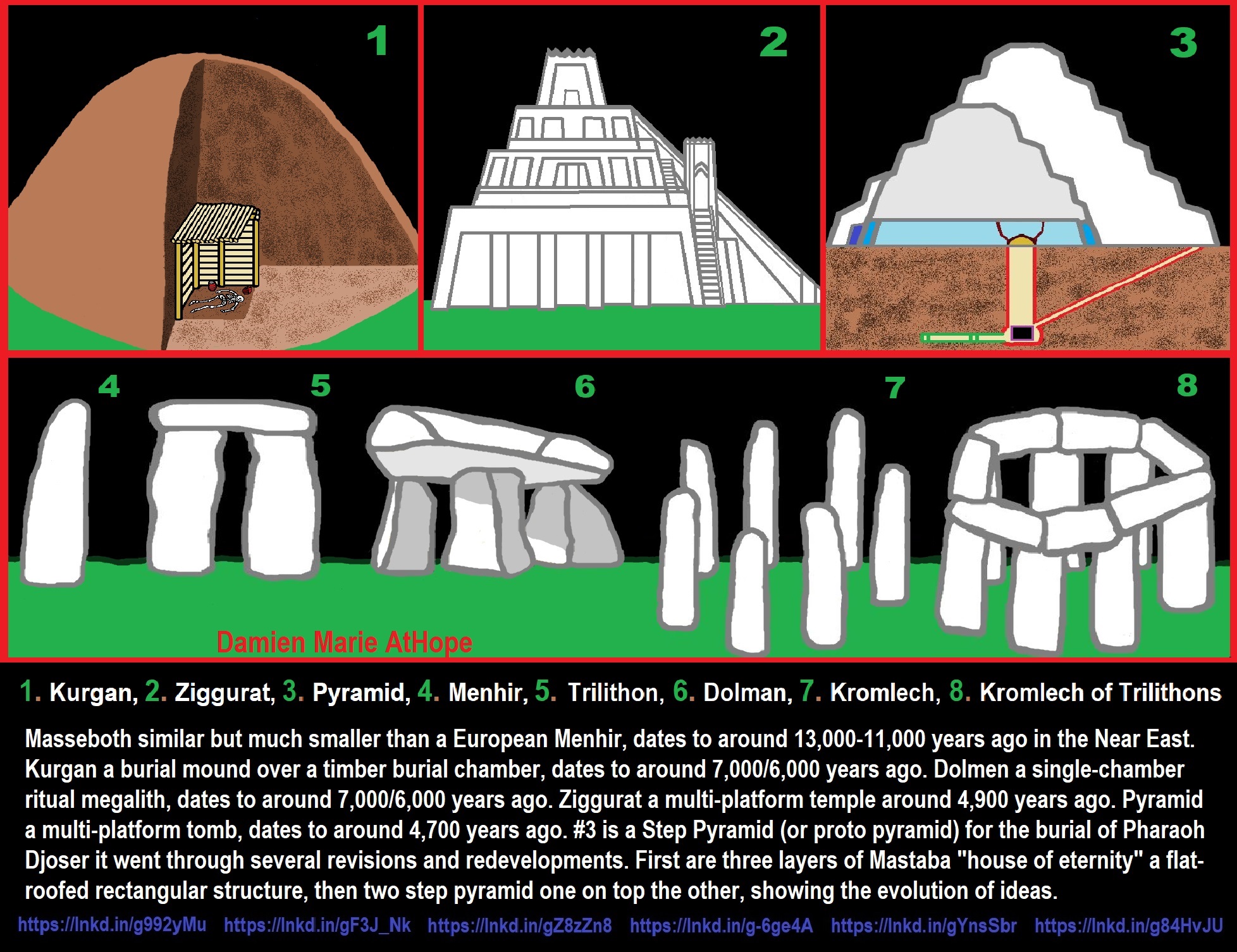
ref, ref, ref, ref, ref, ref, ref, ref, ref, ref, ref, ref
Masseboth similar but much smaller than a European Menhir, dates to around 13,000-11,000 years ago in the Near East. Kurgan a burial mound over a timber burial chamber, dates to around 7,000/6,000 years ago. Dolmen a single-chamber ritual megalith, dates to around 7,000/6,000 years ago. Ziggurat a multi-platform temple around 4,900 years ago. Pyramid a multi-platform tomb, dates to around 4,700 years ago. #3 is a Step Pyramid (or proto pyramid) for the burial of Pharaoh Djoser it went through several revisions and redevelopments. First are three layers of Mastaba “house of eternity” a flat-roofed rectangular structure, then two step pyramid one on top the other, showing the evolution of ideas.

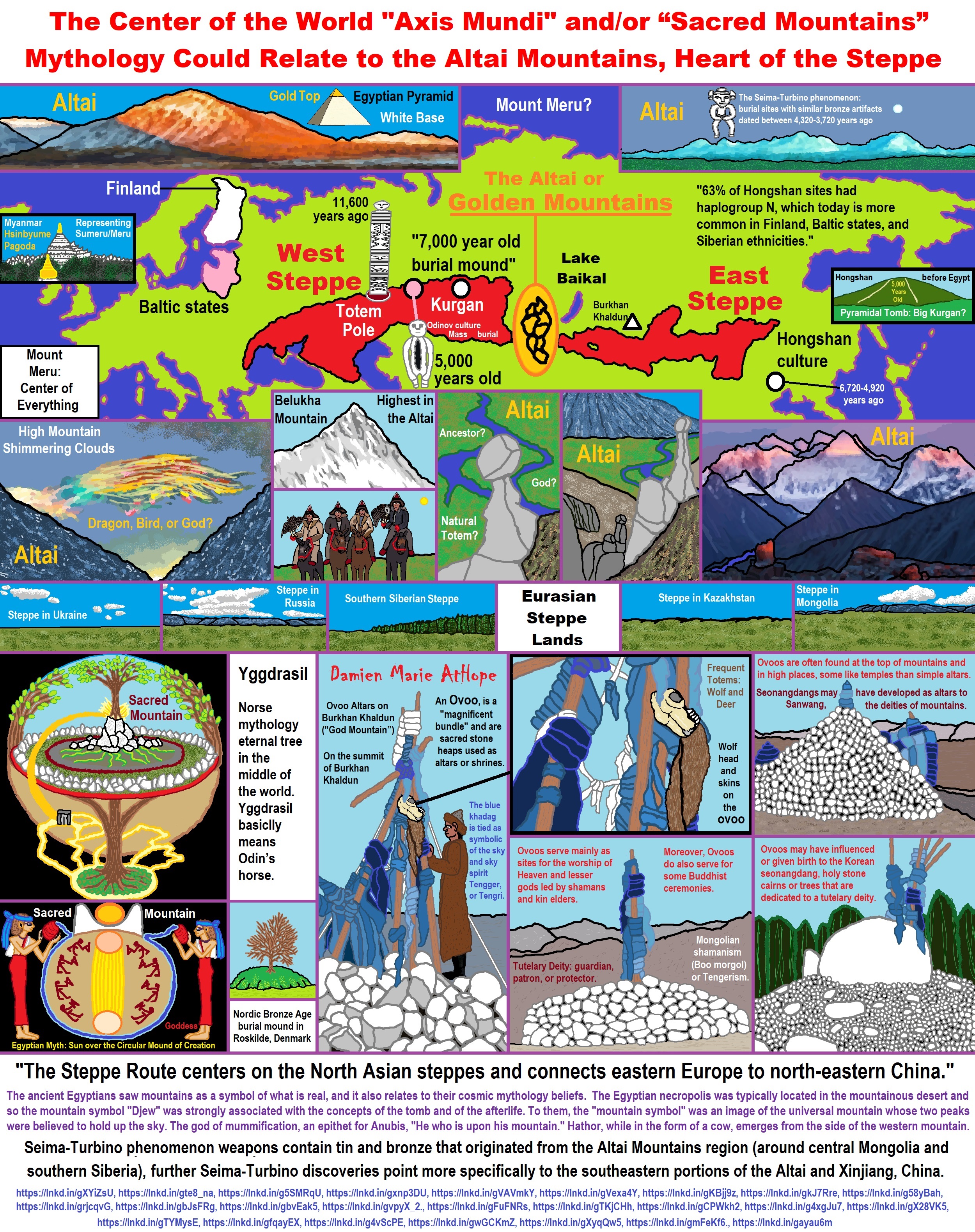

ref, ref, ref, ref, ref, ref, ref, ref, ref, ref, ref, ref, ref, ref, ref, ref, ref, ref, ref, ref, ref, ref, ref, ref, ref, ref, ref, ref, ref, ref, ref, ref, ref, ref, ref, ref, ref, ref, ref, ref, ref, ref, ref, ref, ref, ref, ref, ref, ref, ref, ref, ref, ref, ref, ref, ref, ref, ref, ref, ref, ref, ref, ref, ref, ref, ref, ref, ref, ref, ref, ref, ref, ref, ref, ref, ref, ref, ref, ref, ref, ref, ref, ref, ref, ref, ref, ref, ref, ref, ref
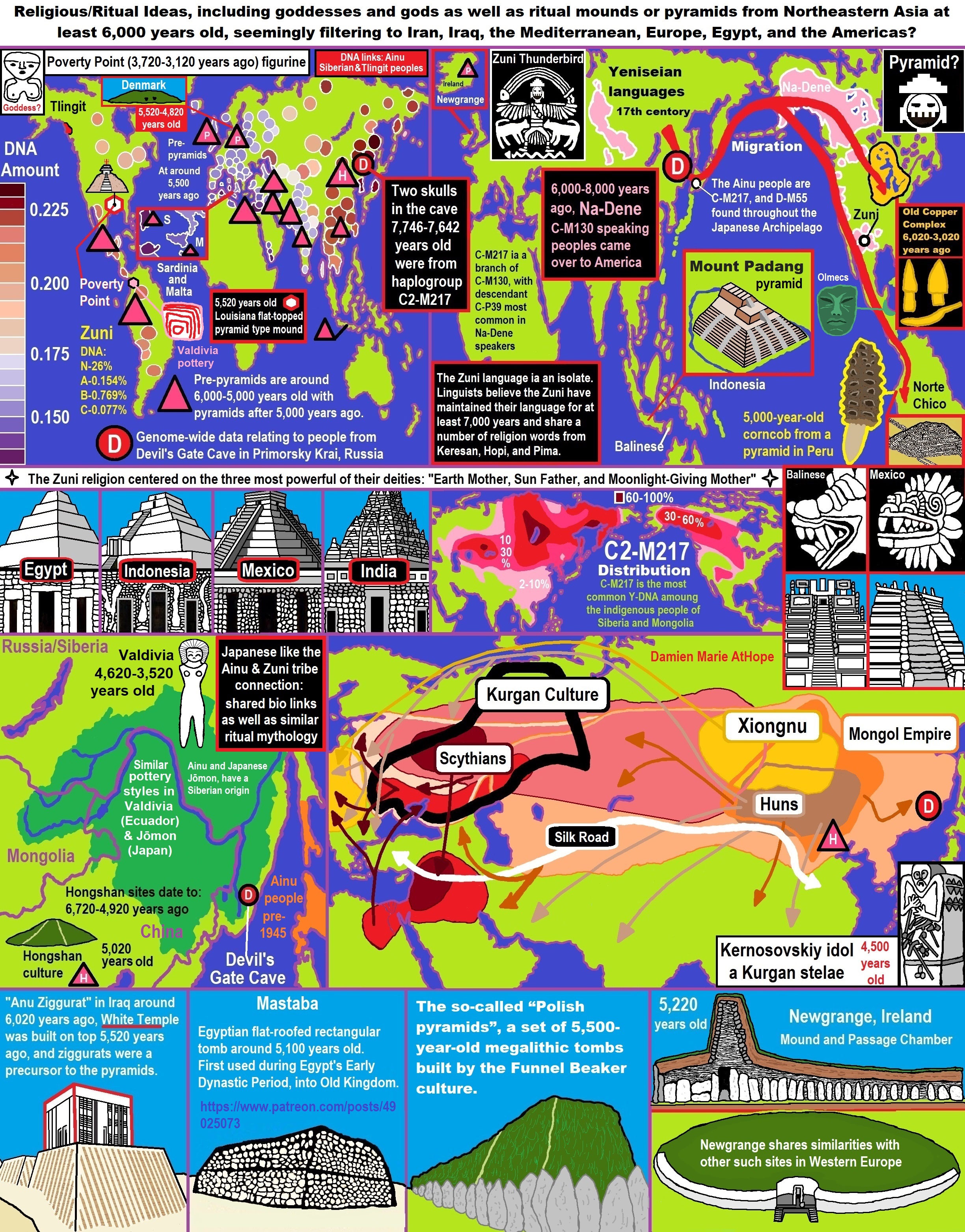

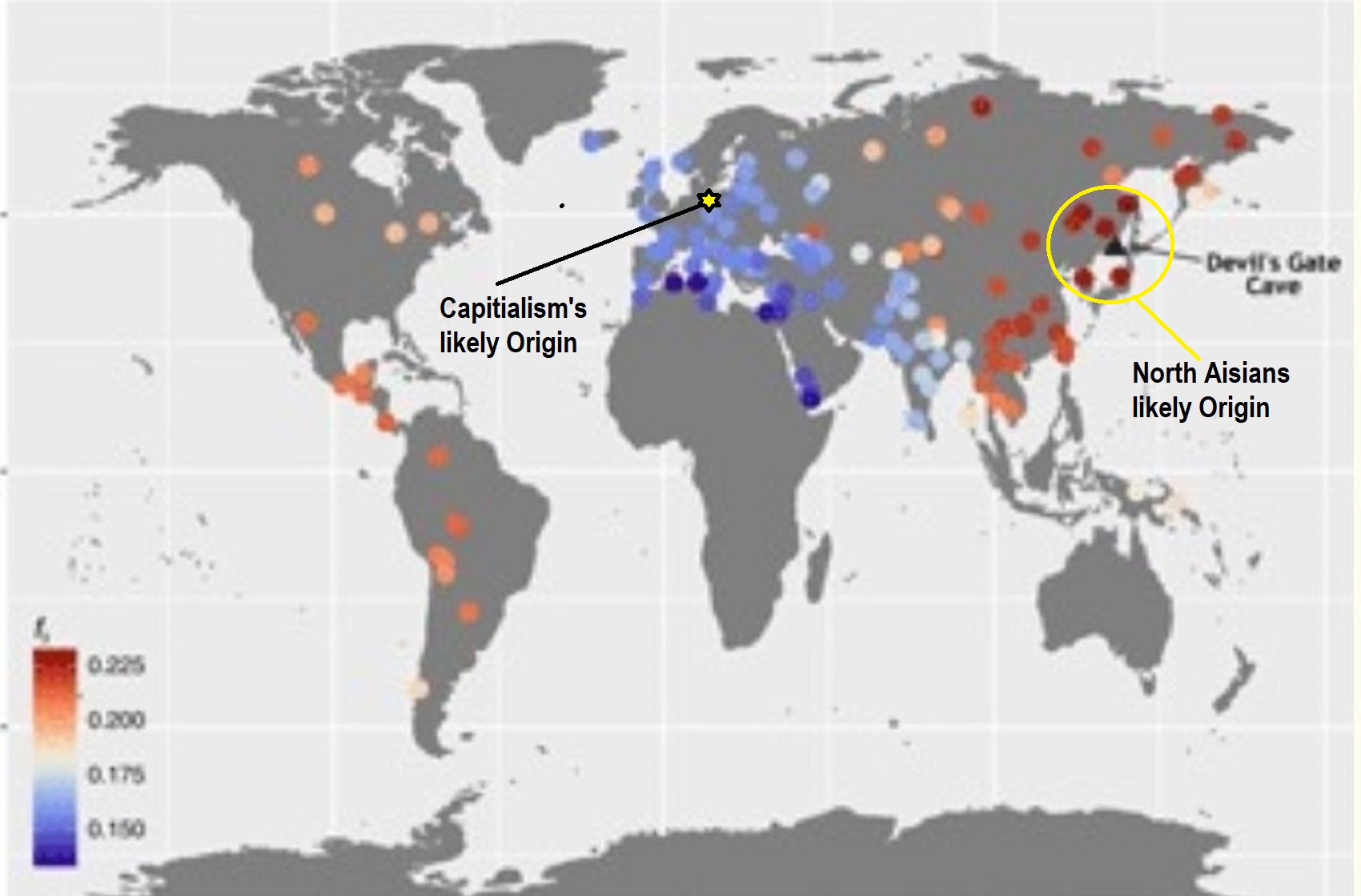
Pic ref
Ancient Women Found in a Russian Cave Turn Out to Be Closely Related to The Modern Population https://www.sciencealert.com/ancient-women-found-in-a-russian-cave-turn-out-to-be-closely-related-to-the-modern-population
Abstract
“Ancient genomes have revolutionized our understanding of Holocene prehistory and, particularly, the Neolithic transition in western Eurasia. In contrast, East Asia has so far received little attention, despite representing a core region at which the Neolithic transition took place independently ~3 millennia after its onset in the Near East. We report genome-wide data from two hunter-gatherers from Devil’s Gate, an early Neolithic cave site (dated to ~7.7 thousand years ago) located in East Asia, on the border between Russia and Korea. Both of these individuals are genetically most similar to geographically close modern populations from the Amur Basin, all speaking Tungusic languages, and, in particular, to the Ulchi. The similarity to nearby modern populations and the low levels of additional genetic material in the Ulchi imply a high level of genetic continuity in this region during the Holocene, a pattern that markedly contrasts with that reported for Europe.” ref




ref, ref, ref, ref, ref, ref, ref, ref, ref, ref, ref, ref, ref, ref, ref, ref, ref
“The shaman is, above all, a connecting figure, bridging several worlds for his people, traveling between this world, the underworld, and the heavens. He transforms himself into an animal and talks with ghosts, the dead, the deities, and the ancestors. He dies and revives. He brings back knowledge from the shadow realm, thus linking his people to the spirits and places which were once mythically accessible to all.–anthropologist Barbara Meyerhoff” ref
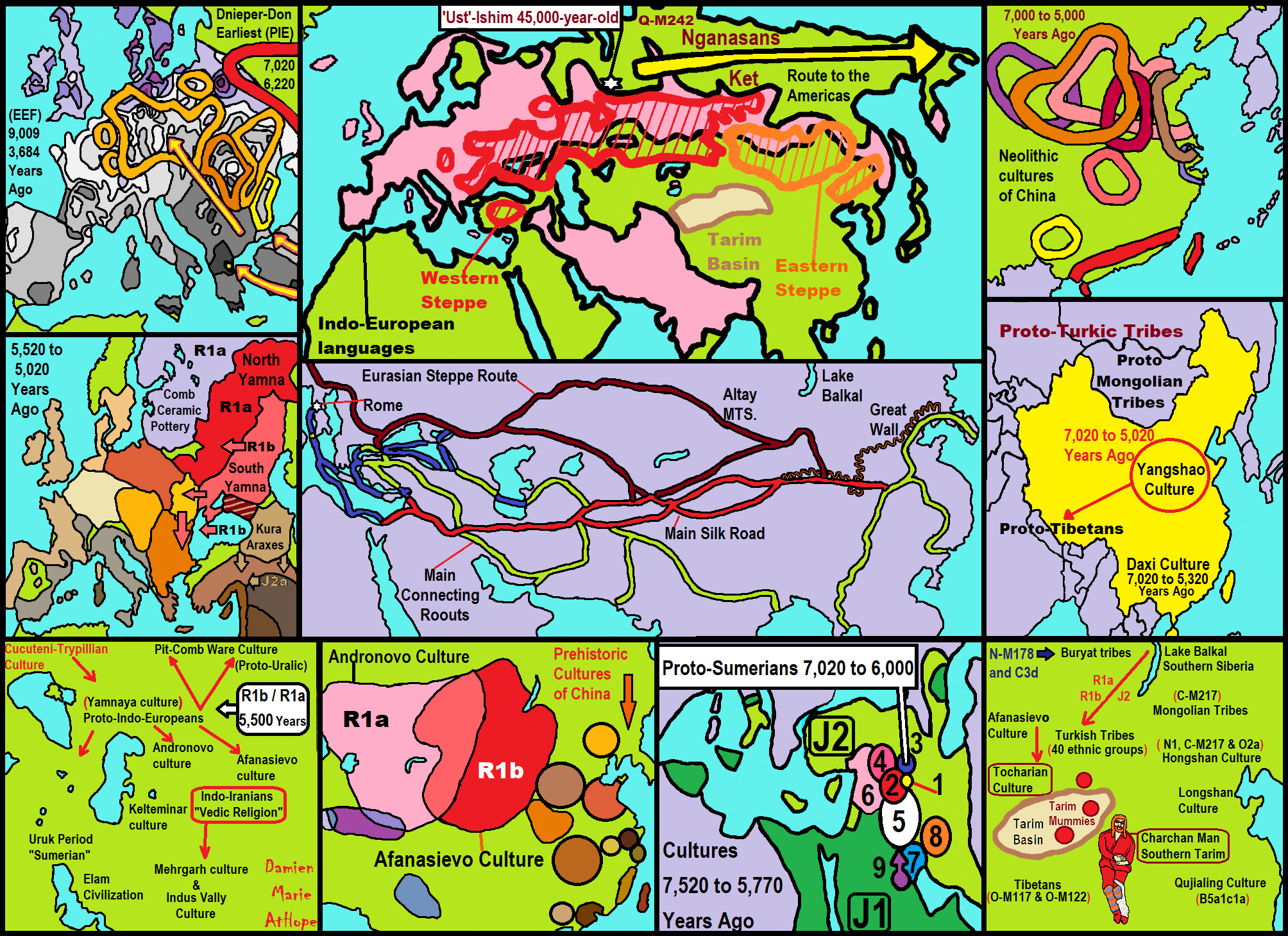
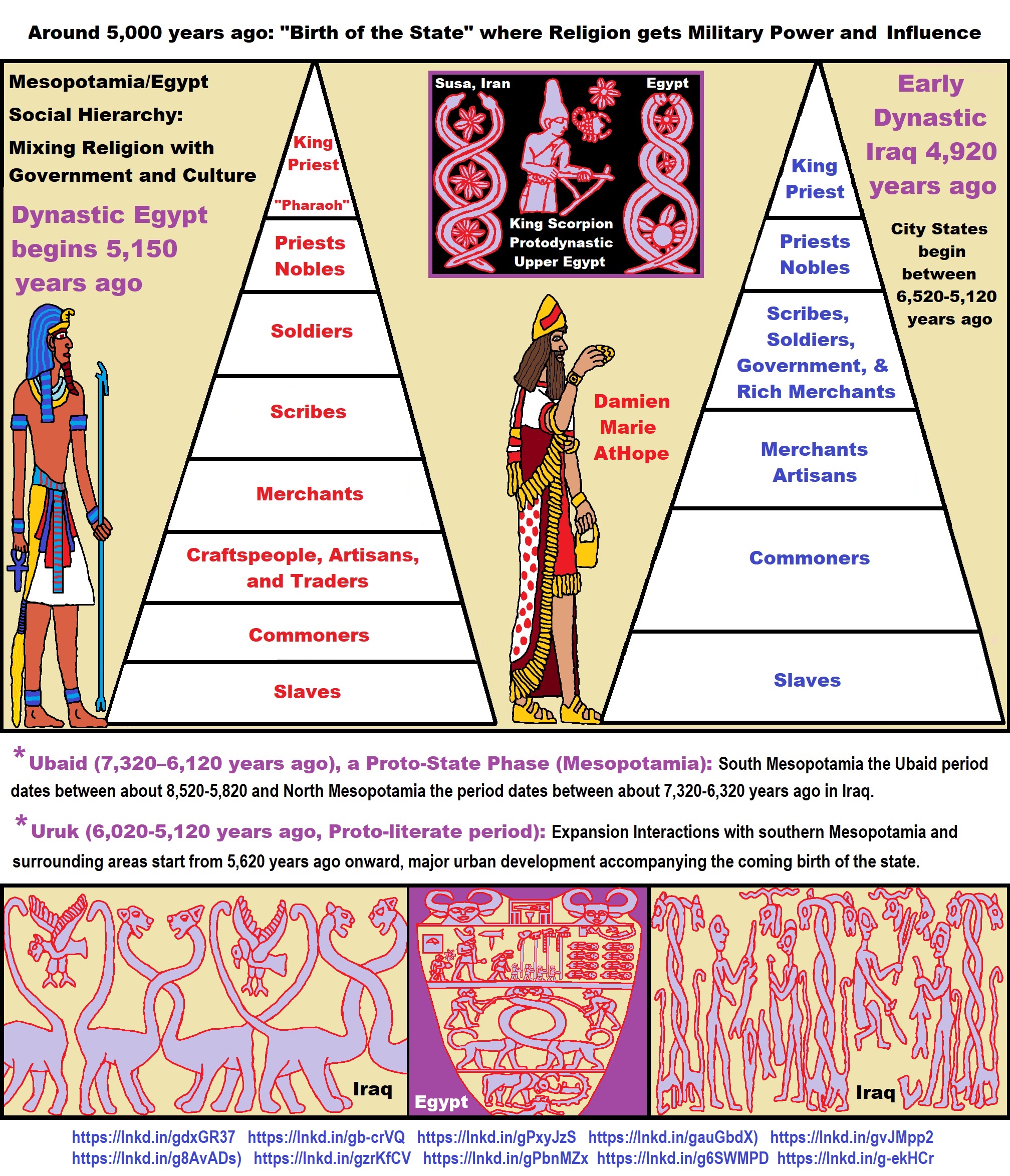
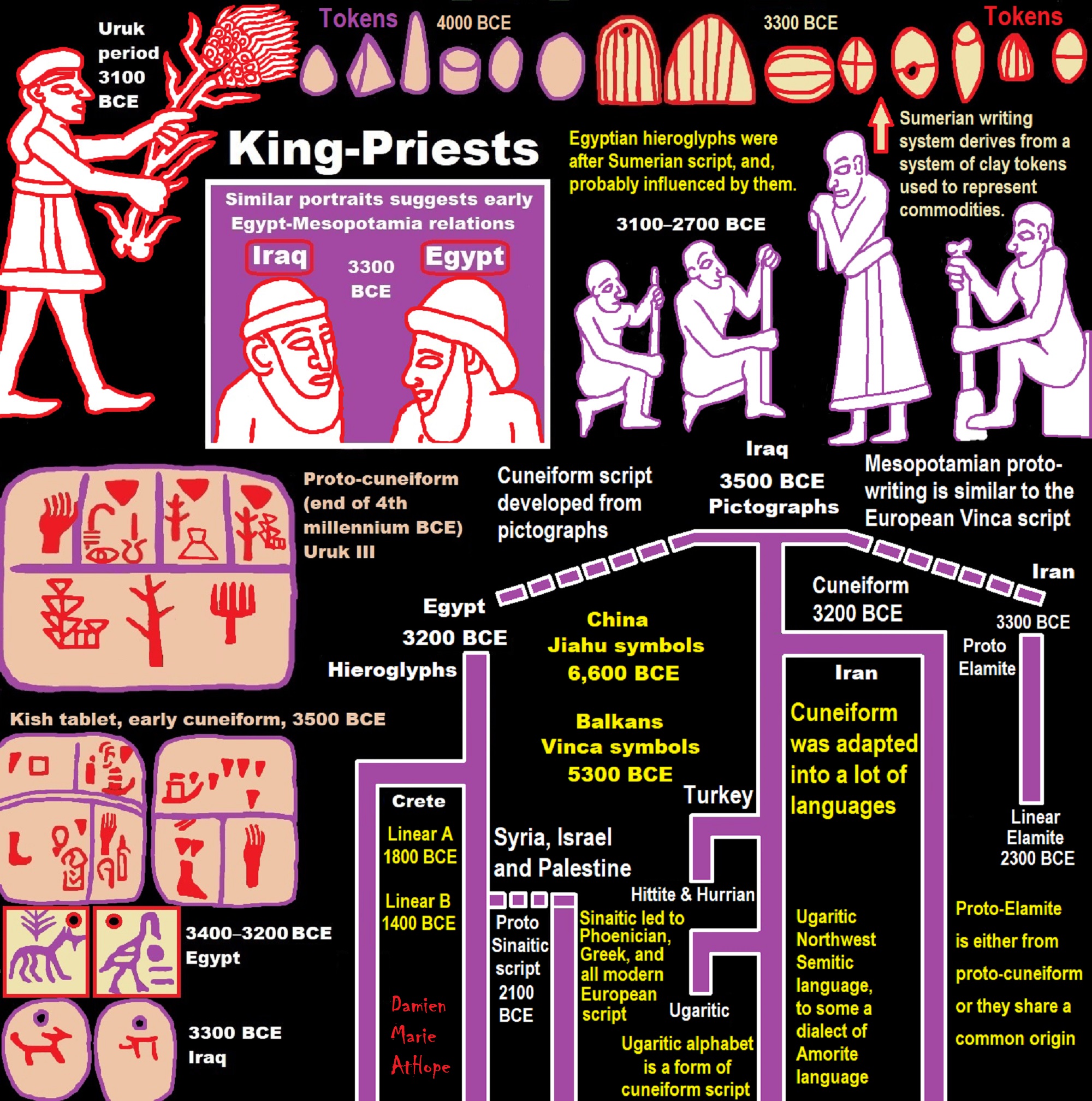
UFO Religions?
“Various new religious movements including some branches of theosophy, Scientology, Raëlism, Aetherius Society, and Heaven’s Gate believe in ancient and present-day contact with extraterrestrial intelligence. Many of these faiths see both ancient scriptures and recent revelations as connected with the action of aliens from other planetary systems. Psychologists have found that UFO religions have similarities which suggest that members of these groups consciously or subliminally associate enchantment with the memes of science fiction.” ref
“A UFO religion is any religion in which the existence of extraterrestrial (ET) entities operating unidentified flying objects (UFOs) is an element of belief. Typically, adherents of such religions believe the ETs to be interested in the welfare of humanity which either already is, or eventually will become, part of a pre-existing ET civilization. Others may incorporate ETs into a more supernatural worldview in which the UFO occupants are more akin to angels than physical aliens; this distinction may be blurred within the overall subculture. These religions have their roots in the tropes of early science fiction (especially space opera) and weird fiction writings, in ufology, and in the subculture of UFO sightings and alien abduction stories.” ref
“Some adherents believe that the arrival or rediscovery of alien civilizations, technologies, and spirituality will enable humans to overcome current ecological, spiritual, and social problems. Issues such as hatred, war, bigotry, poverty, and so on are said to be resolvable through the use of superior alien technology and spiritual abilities. Such belief systems are also described as millenarian in their outlook.” ref
“UFO religions developed first in such countries as the United States, Canada, France, the United Kingdom, and Japan as the concept presumes the cultural context of a society technologically advanced enough to conceive of ET as such and one in which religion of any kind is not discouraged or suppressed. The term “flying saucers” and the popular notion of the UFO originated in 1947. The 1950s saw the creation of UFO religions, with the advent of the purported contactees.” ref
“The Aetherius Society is a new religious movement founded by George King in the mid-1950s as the result of what King claimed were contacts with extraterrestrial intelligences, to whom he referred as “Cosmic Masters”. The main goal of the believer is to cooperate with these Cosmic Masters to help humanity solve its current Earthly problems and advance into the New Age. “It is a syncretic religion, based primarily on theosophy and incorporating millenarian, New Age, and UFO religion aspects. Emphases of the religion include altruism, community service, nature worship, spiritual healing, and physical exercise.” ref
“Members meet in congregations like those of churches. John A. Saliba states that, unlike many other New Age or UFO religions, the Aetherius Society is for the most part considered uncontroversial, although its esoteric and millenarian aspects are sometimes ridiculed. The religion may be considered to have a relatively conventional praxis, attracting members from mainstream society. The society’s membership, although international, is relatively small. David V. Barrett suggested in 2011 that the worldwide membership was in the thousands, with the largest numbers in the United Kingdom, United States (particularly Southern California) and New Zealand.” ref
Heaven’s Gate (religious group)
“Heaven’s Gate was an American new religious movement, often described as a cult. It was founded in 1974 and led by Bonnie Nettles (1927–1985) and Marshall Applewhite (1931–1997), known within the movement as Ti and Do respectively. Nettles and Applewhite first met in 1972, and went on a journey of spiritual discovery, identifying themselves as the two witnesses of Revelation, attracting a following of several hundred people in the mid 1970s. In 1976, the group stopped recruiting and instituted a monastic lifestyle. Scholars have described the theology of Heaven’s Gate as a mixture of Christian millenarianism, New Age, and Ufology, and as such it has been characterised as a UFO religion.” ref
“The central belief of the group was that followers could transform themselves into immortal extraterrestrial beings by rejecting their human nature, and they would ascend to heaven, referred to as the “Next Level” or “The Evolutionary Level Above Human”. The death of Nettles to cancer in 1985 challenged the group’s views on ascension, where they originally believed that they would ascend to heaven while alive aboard a UFO, later coming to believe that the body was merely a “container” or “vehicle” for the soul, and that their consciousness would be transferred to new “Next Level bodies” upon death.” ref
“On March 26, 1997, deputies of the San Diego County Sheriff’s Department discovered the bodies of the 39 active members of the group, including that of Applewhite, in a house in the San Diego suburb of Rancho Santa Fe. They had participated in a mass suicide, a coordinated series of ritual suicides, coinciding with the closest approach of the Comet Hale–Bopp. Just before the mass suicide, the group’s website was updated with the message: ‘Hale–Bopp brings closure to Heaven’s Gate …our 22 years of classroom here on planet Earth is finally coming to conclusion — ‘graduation’ from the Human Evolutionary Level. We are happily prepared to leave ‘this world’ and go with Ti’s crew.’ The name “Heaven’s Gate” was only used for the final few years of the group’s existence, and they had previously been known under the names Human Individual Metamorphosis and Total Overcomers Anonymous.” ref
“Heaven’s Gate received coverage in Jacques Vallée‘s book Messengers of Deception (1979), in which Vallée described an unusual public meeting organized by the group. Vallée frequently expressed concerns within the book about contactee groups’ authoritarian political and religious outlooks, and Heaven’s Gate did not escape criticism. Known to the mainstream media (though largely ignored through the 1980s and 1990s), Heaven’s Gate was better known in UFO circles, as well as through a series of academic studies by sociologist Robert Balch.” ref
“In January 1994, the LA Weekly ran an article on the group, then known as “The Total Overcomers”. Richard Ford, who would later play a key role in the 1997 group suicide, discovered Heaven’s Gate through this article and eventually joined them, renaming himself Rio DiAngelo. Coast to Coast AM host Art Bell featured the theory of the “companion object” in the shadow of Hale–Bopp on several programs, as early as November 1996; speculation has been raised as to whether his programs on the subject contributed to Heaven’s Gate’s group suicide months later, which Knowledge Fight host Dan Friesen blames more on Courtney Brown rather than Bell. Louis Theroux contacted the Heaven’s Gate group while making a program for his BBC2 documentary series, Louis Theroux’s Weird Weekends, in early March 1997. In response to his e-mail, Theroux was told that Heaven’s Gate could not take part in the documentary because “at the present time a project like this would be an interference with what we must focus on.” ref
Mass suicide
“In October 1996, the group began renting a large home which they called “The Monastery”, a 9,200 square feet (850 m2) mansion located near 18341 Colina Norte (later changed to Paseo Victoria) in Rancho Santa Fe, California. They paid $7,000 per month, in cash. In the same month, the group purchased alien abduction insurance that would cover up to fifty members and would pay out $1 million per person (the policy covered abduction, impregnation, or death by aliens). Prior to this, in June 1995 they had purchased land near Manzano, New Mexico, and had begun work creating a compound out of rubber tires and concrete, but had left abruptly in April 1996.” ref
“On March 19–20, 1997, Marshall Applewhite taped himself in Do’s Final Exit, speaking of mass suicide and “the only way to evacuate this Earth”. After asserting that a spacecraft was trailing Comet Hale–Bopp and that this event would represent the “closure to Heaven’s Gate”, Applewhite persuaded 38 followers to prepare for ritual suicide so their souls could board the supposed craft. Applewhite believed that after their deaths an unidentified flying object (UFO) would take their souls to another “level of existence above human”, which he described as being both physical and spiritual. Their preparations included each member’s videotaping a farewell message.” ref
“To kill themselves, members took phenobarbital mixed with apple sauce or pudding and washed it down with vodka. Additionally, they secured plastic bags around their heads after ingesting the mix to induce asphyxiation. All 39 were dressed in identical black shirts and sweat pants, brand new black-and-white Nike Decades athletic shoes, and armband patches reading “Heaven’s Gate Away Team” (one of many instances of the group’s use of the nomenclature of the fictional universe of Star Trek). Each member had on their person a five-dollar bill and three quarters in their pockets.” ref
“According to former members, this was standard for members leaving the home for jobs and “a humorous way to tell us they all had left the planet permanently”; the five-dollar bill was for covering the cost of vagrancy laws and the quarters were for calling home from pay phones. Once a member was dead, a living member would arrange the body by removing the plastic bag from the person’s head, followed by posing the body so that it lay neatly in its own bed, with faces and torsos covered by a square purple cloth for privacy.” ref
“In an interview with Harry Robinson, the two surviving members said that the identical clothing was used as a uniform for the mass suicide to represent unity, whilst the Nike Decades were chosen because the group “got a good deal on the shoes”. Applewhite was also a fan of Nikes “and therefore everyone was expected to wear and like Nikes” within the group. Heaven’s Gate also had a saying within the group, ‘Just Do it,’ using Nike’s slogan. They pronounced Do as Doe, to reflect Applewhite’s nickname.” ref
“The 39 adherents, 21 women and 18 men between the ages of 26 and 72, are believed to have died in three groups over three successive days, with remaining participants cleaning up after each prior group’s deaths. The suicides occurred in groups of fifteen, fifteen, and nine, between approximately March 22 and March 26. Among the dead was Thomas Nichols, brother of the actress Nichelle Nichols, who is best known for her role as Uhura in the original television series of Star Trek. Leader Applewhite was the third to last member to die; two people remained after him and were the only ones who would be found with bags over their heads and not having purple cloths covering their top halves. Before the last of the suicides, similar sets of packages were sent to numerous Heaven’s Gate affiliated (or formerly affiliated) individuals, and at least one media outlet, the BBC department responsible for Louis Theroux’s Weird Weekends, for which Heaven’s Gate had earlier declined participation.” ref
“Among those in the list of recipients was Rio DiAngelo. The package DiAngelo received on the evening of March 25, as other packages sent had, contained two VHS videotapes, one with Do’s Final Exit, and the other with the “farewell messages” of group followers. It also contained a letter, stating that among other things, “we have exited our vehicles, just as we entered them.” Upon informing his boss of the contents of the packages, DiAngelo received a ride from him from Los Angeles to the Heaven’s Gate home in Rancho Santa Fe so he could verify the letter. DiAngelo found a back door intentionally left unlocked to allow access, and used a video camera to record what he found. After leaving the house, DiAngelo’s boss, who had waited outside, encouraged him to make calls to authorities alerting them to his discovery.” ref
“The San Diego County Sheriff’s Department received an anonymous tip through the 911 system at 3:15 p.m. on March 26, suggesting they “check on the welfare of the residents”. Days after the suicides, this caller was revealed to be DiAngelo.
Caller: Yes, I need to report an anonymous tip, who do I talk to?
Sherriff’s Department: Okay, this is regarding what?
Caller: This is regarding a mass suicide, and I can give you the address …
— San Diego County 911 call, March 26, 1997, 3:15 p.m. PST” ref
“The single deputy who first responded to the call entered the home through a side door, saw ten bodies, and was nearly overcome by a “pungent odor”. (The bodies were already decomposing in the hot California spring.) After a cursory search by two deputies found no one alive, both retreated until a search warrant could be procured. All 39 bodies were ultimately cremated.” ref
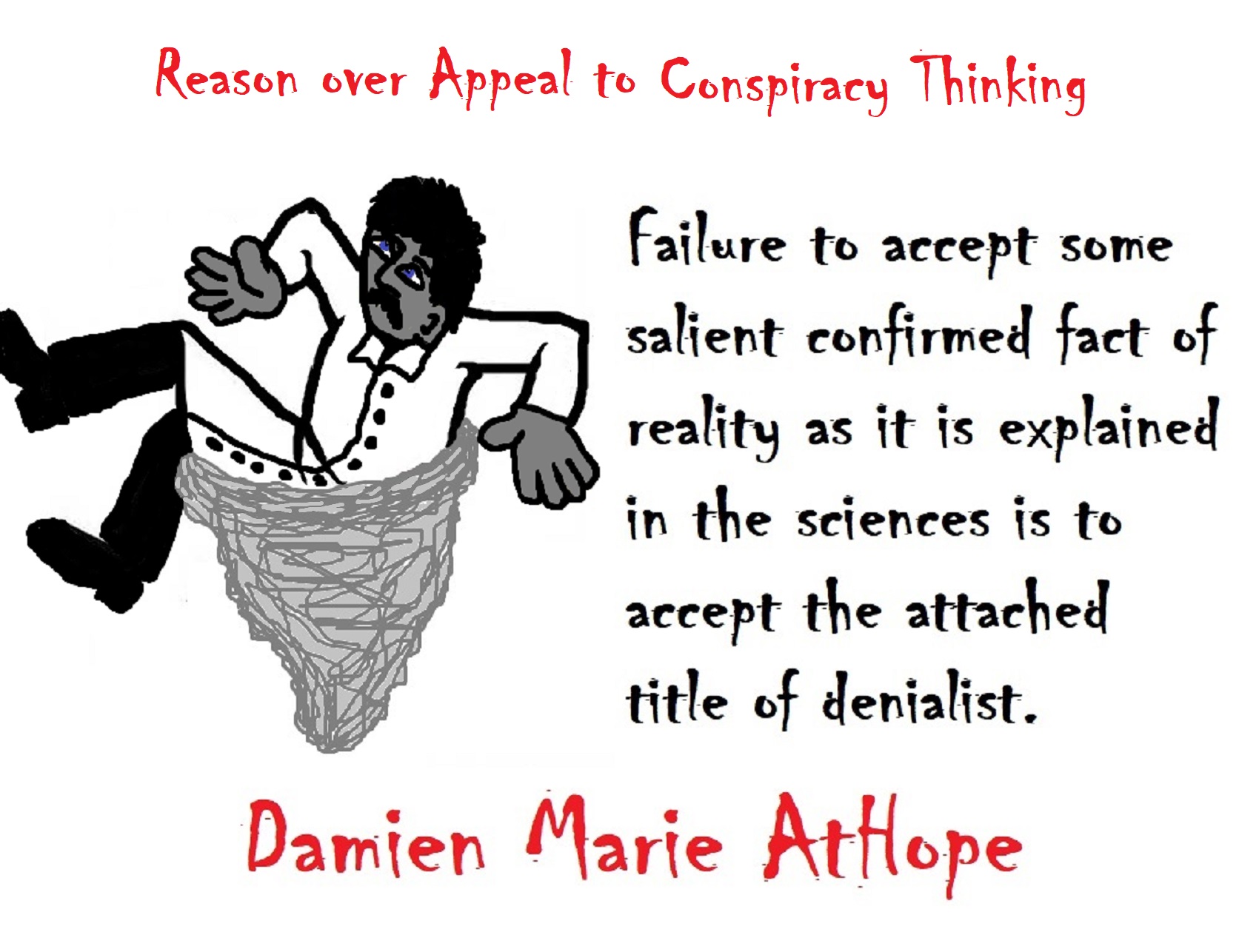
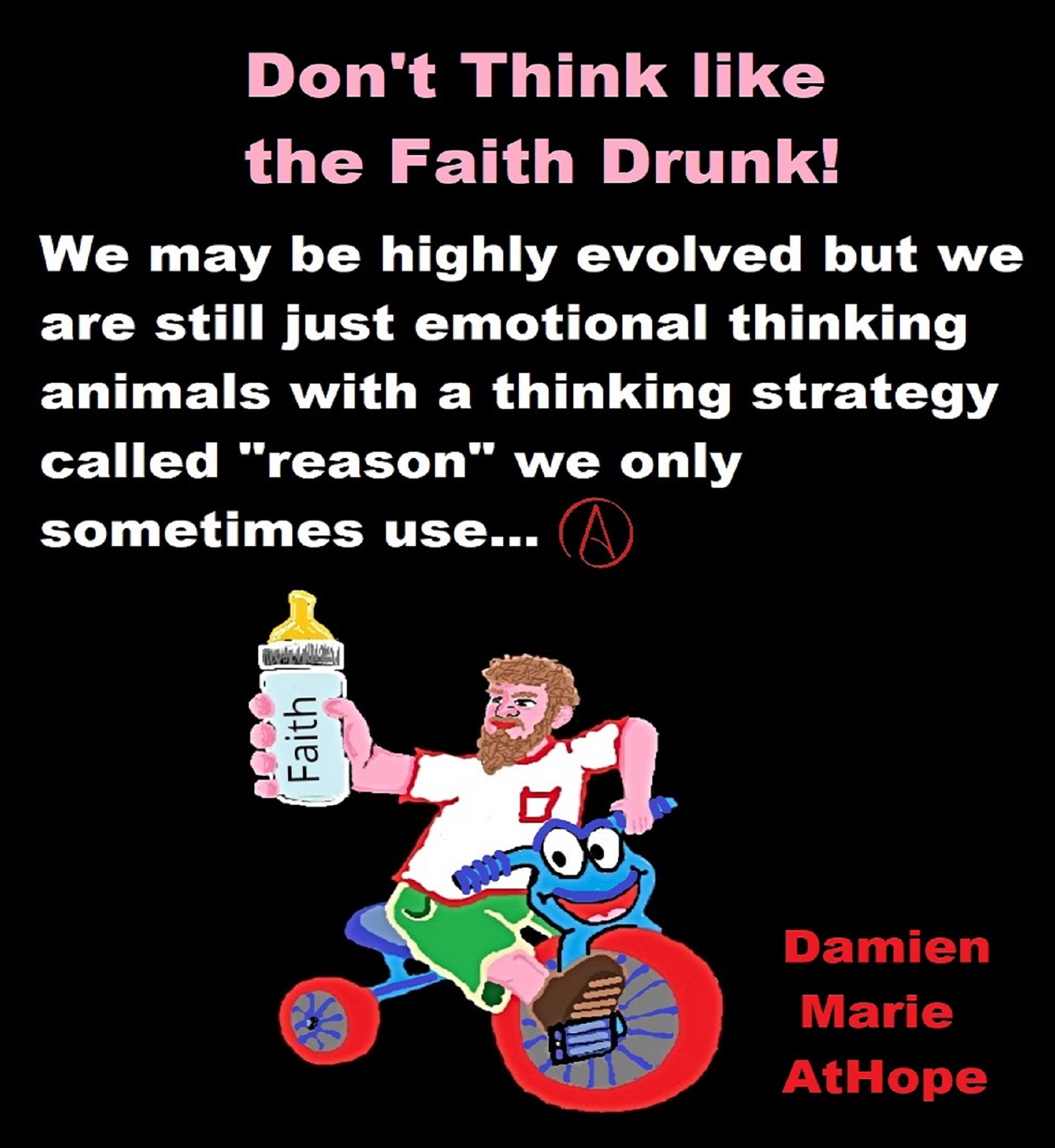
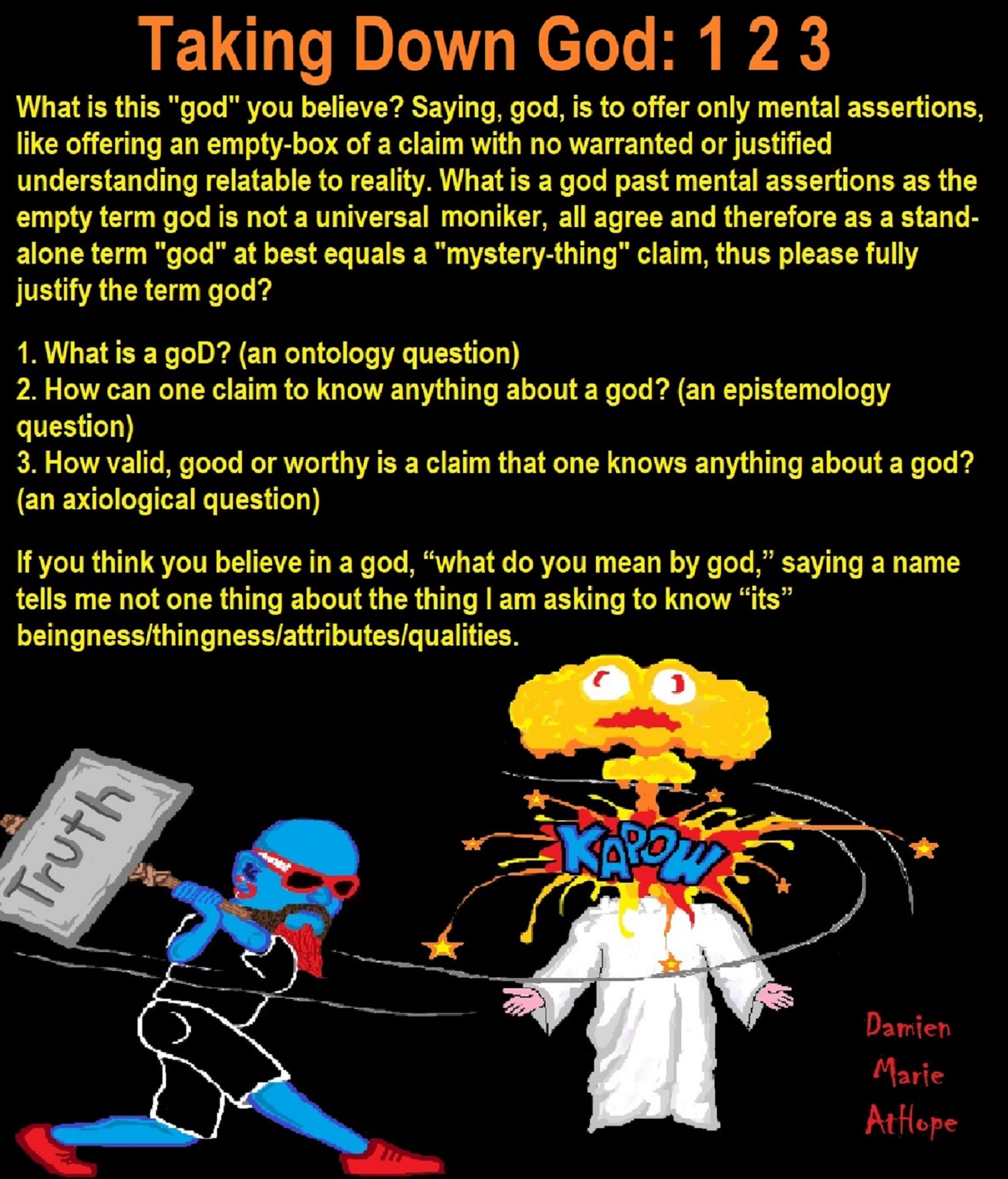
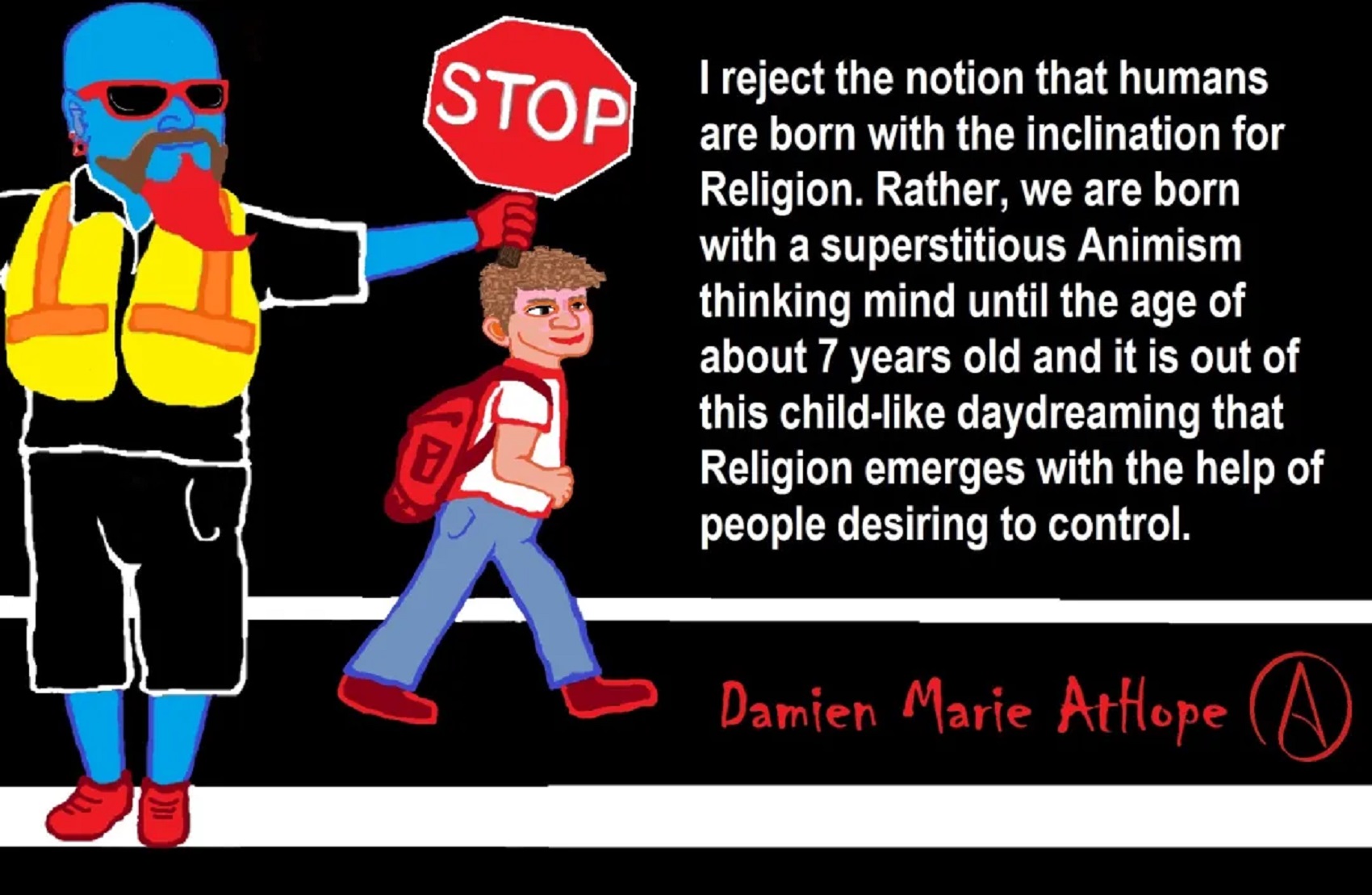

Animism: Respecting the Living World by Graham Harvey
“How have human cultures engaged with and thought about animals, plants, rocks, clouds, and other elements in their natural surroundings? Do animals and other natural objects have a spirit or soul? What is their relationship to humans? In this new study, Graham Harvey explores current and past animistic beliefs and practices of Native Americans, Maori, Aboriginal Australians, and eco-pagans. He considers the varieties of animism found in these cultures as well as their shared desire to live respectfully within larger natural communities. Drawing on his extensive casework, Harvey also considers the linguistic, performative, ecological, and activist implications of these different animisms.” ref

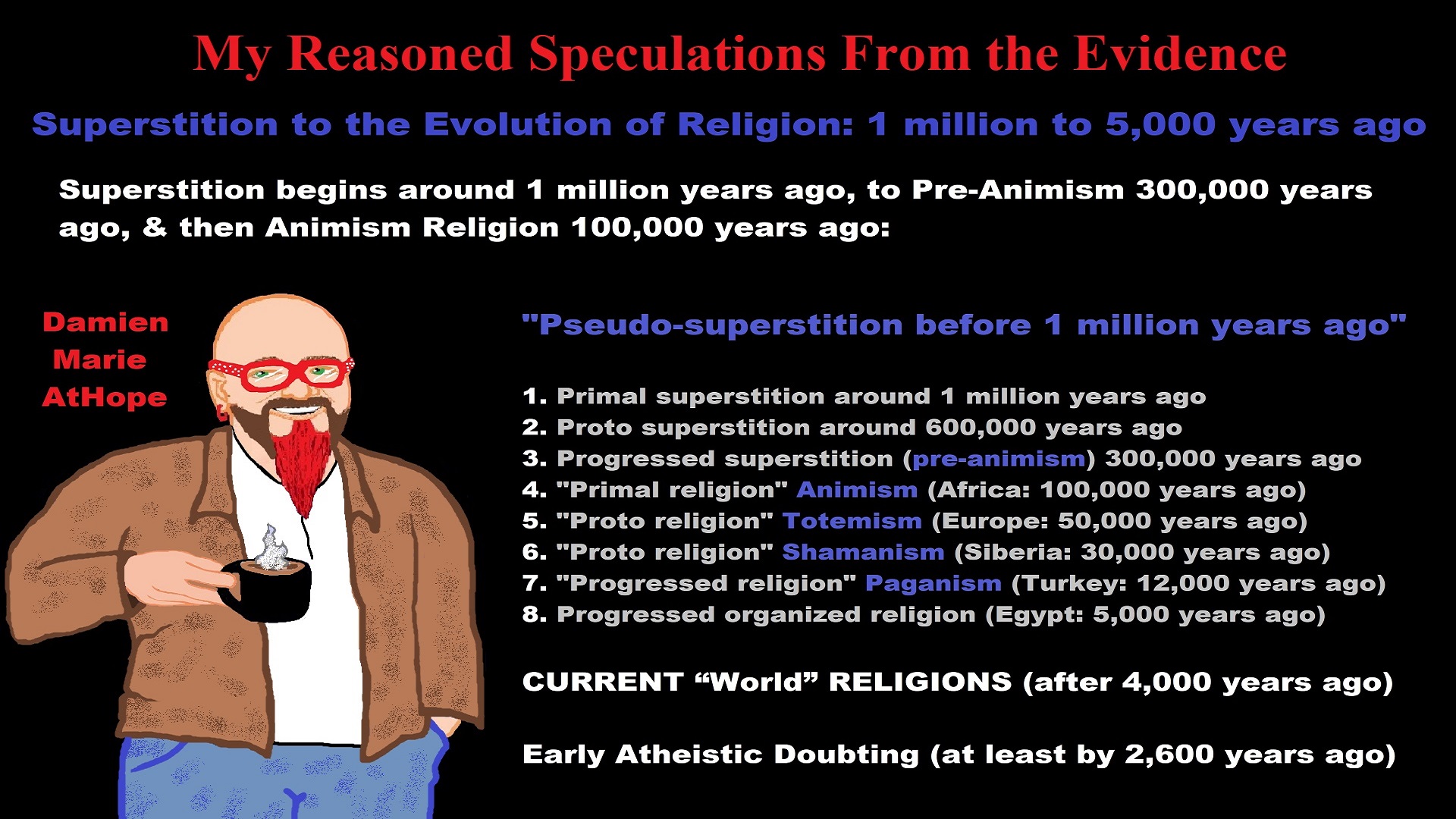
My thoughts on Religion Evolution with external links for more info:
- (Pre-Animism Africa mainly, but also Europe, and Asia at least 300,000 years ago), (Pre-Animism – Oxford Dictionaries)
- (Animism Africa around 100,000 years ago), (Animism – Britannica.com)
- (Totemism Europe around 50,000 years ago), (Totemism – Anthropology)
- (Shamanism Siberia around 30,000 years ago), (Shamanism – Britannica.com)
- (Paganism Turkey around 12,000 years ago), (Paganism – BBC Religion)
- (Progressed Organized Religion “Institutional Religion” Egypt around 5,000 years ago), (Ancient Egyptian Religion – Britannica.com)
- (CURRENT “World” RELIGIONS after 4,000 years ago) (Origin of Major Religions – Sacred Texts)
- (Early Atheistic Doubting at least by 2,600 years ago) (History of Atheism – Wikipedia)
“Religion is an Evolved Product” and Yes, Religion is Like Fear Given Wings…
Atheists talk about gods and religions for the same reason doctors talk about cancer, they are looking for a cure, or a firefighter talks about fires because they burn people and they care to stop them. We atheists too often feel a need to help the victims of mental slavery, held in the bondage that is the false beliefs of gods and the conspiracy theories of reality found in religions.
Understanding Religion Evolution:
- Pre-Animism (at least 300,000 years ago)
- Animism (Africa: 100,000 years ago)
- Totemism (Europe: 50,000 years ago)
- Shamanism (Siberia: 30,000 years ago)
- Paganism (Turkey: 12,000 years ago)
- Progressed organized religion (Egypt: 5,000 years ago), (Egypt, the First Dynasty 5,150 years ago)
- CURRENT “World” RELIGIONS (after 4,000 years ago)
- Early Atheistic Doubting (at least by 2,600 years ago)
“An Archaeological/Anthropological Understanding of Religion Evolution”
It seems ancient peoples had to survived amazing threats in a “dangerous universe (by superstition perceived as good and evil),” and human “immorality or imperfection of the soul” which was thought to affect the still living, leading to ancestor worship. This ancestor worship presumably led to the belief in supernatural beings, and then some of these were turned into the belief in gods. This feeble myth called gods were just a human conceived “made from nothing into something over and over, changing, again and again, taking on more as they evolve, all the while they are thought to be special,” but it is just supernatural animistic spirit-belief perceived as sacred.
Quick Evolution of Religion?
Pre-Animism (at least 300,000 years ago) pre-religion is a beginning that evolves into later Animism. So, Religion as we think of it, to me, all starts in a general way with Animism (Africa: 100,000 years ago) (theoretical belief in supernatural powers/spirits), then this is physically expressed in or with Totemism (Europe: 50,000 years ago) (theoretical belief in mythical relationship with powers/spirits through a totem item), which then enlists a full-time specific person to do this worship and believed interacting Shamanism (Siberia/Russia: 30,000 years ago) (theoretical belief in access and influence with spirits through ritual), and then there is the further employment of myths and gods added to all the above giving you Paganism (Turkey: 12,000 years ago) (often a lot more nature-based than most current top world religions, thus hinting to their close link to more ancient religious thinking it stems from). My hypothesis is expressed with an explanation of the building of a theatrical house (modern religions development). Progressed organized religion (Egypt: 5,000 years ago) with CURRENT “World” RELIGIONS (after 4,000 years ago).
Historically, in large city-state societies (such as Egypt or Iraq) starting around 5,000 years ago culminated to make religion something kind of new, a sociocultural-governmental-religious monarchy, where all or at least many of the people of such large city-state societies seem familiar with and committed to the existence of “religion” as the integrated life identity package of control dynamics with a fixed closed magical doctrine, but this juggernaut integrated religion identity package of Dogmatic-Propaganda certainly did not exist or if developed to an extent it was highly limited in most smaller prehistoric societies as they seem to lack most of the strong control dynamics with a fixed closed magical doctrine (magical beliefs could be at times be added or removed). Many people just want to see developed religious dynamics everywhere even if it is not. Instead, all that is found is largely fragments until the domestication of religion.
Religions, as we think of them today, are a new fad, even if they go back to around 6,000 years in the timeline of human existence, this amounts to almost nothing when seen in the long slow evolution of religion at least around 70,000 years ago with one of the oldest ritual worship. Stone Snake of South Africa: “first human worship” 70,000 years ago. This message of how religion and gods among them are clearly a man-made thing that was developed slowly as it was invented and then implemented peace by peace discrediting them all. Which seems to be a simple point some are just not grasping how devastating to any claims of truth when we can see the lie clearly in the archeological sites.
I wish people fought as hard for the actual values as they fight for the group/clan names political or otherwise they think support values. Every amount spent on war is theft to children in need of food or the homeless kept from shelter.
Here are several of my blog posts on history:
- To Find Truth You Must First Look
- (Magdalenian/Iberomaurusian) Connections to the First Paganists of the early Neolithic Near East Dating from around 17,000 to 12,000 Years Ago
- Natufians: an Ancient People at the Origins of Agriculture and Sedentary Life
- Possible Clan Leader/Special “MALE” Ancestor Totem Poles At Least 13,500 years ago?
- Jewish People with DNA at least 13,200 years old, Judaism, and the Origins of Some of its Ideas
- Baltic Reindeer Hunters: Swiderian, Lyngby, Ahrensburgian, and Krasnosillya cultures 12,020 to 11,020 years ago are evidence of powerful migratory waves during the last 13,000 years and a genetic link to Saami and the Finno-Ugric peoples.
- The Rise of Inequality: patriarchy and state hierarchy inequality
- Fertile Crescent 12,500 – 9,500 Years Ago: fertility and death cult belief system?
- 12,400 – 11,700 Years Ago – Kortik Tepe (Turkey) Pre/early-Agriculture Cultic Ritualism
- Ritualistic Bird Symbolism at Gobekli Tepe and its “Ancestor Cult”
- Male-Homosexual (female-like) / Trans-woman (female) Seated Figurine from Gobekli Tepe
- Could a 12,000-year-old Bull Geoglyph at Göbekli Tepe relate to older Bull and Female Art 25,000 years ago and Later Goddess and the Bull cults like Catal Huyuk?
- Sedentism and the Creation of goddesses around 12,000 years ago as well as male gods after 7,000 years ago.
- Alcohol, where Agriculture and Religion Become one? Such as Gobekli Tepe’s Ritualistic use of Grain as Food and Ritual Drink
- Neolithic Ritual Sites with T-Pillars and other Cultic Pillars
- Paganism: Goddesses around 12,000 years ago then Male Gods after 7,000 years ago
- First Patriarchy: Split of Women’s Status around 12,000 years ago & First Hierarchy: fall of Women’s Status around 5,000 years ago.
- Natufians: an Ancient People at the Origins of Agriculture and Sedentary Life
- J DNA and the Spread of Agricultural Religion (paganism)
- Paganism: an approximately 12,000-year-old belief system
- Paganism 12,000 years old: related to “Anarchism and Socialism” (Pre-Capitalism)
- Shaman burial in Israel 12,000 years ago and the Shamanism Phenomena
- Need to Mythicized: gods and goddesses
- 12,000 – 7,000 Years Ago – Paleo-Indian Culture (The Americas)
- 12,000 – 2,000 Years Ago – Indigenous-Scandinavians (Nordic)
- Norse did not wear helmets with horns?
- Pre-Pottery Neolithic Skull Cult around 11,500 to 8,400 Years Ago?
- 10,400 – 10,100 Years Ago, in Turkey the Nevail Cori Religious Settlement
- 9,000-6,500 Years Old Submerged Pre-Pottery/Pottery Neolithic Ritual Settlements off Israel’s Coast
- Catal Huyuk “first religious designed city” around 9,500 to 7,700 years ago (Turkey)
- Cultic Hunting at Catal Huyuk “first religious designed city”
- Special Items and Art as well as Special Elite Burials at Catal Huyuk
- New Rituals and Violence with the appearance of Pottery and People?
- Haplogroup N and its related Uralic Languages and Cultures
- Ainu people, Sámi people, Native Americans, the Ancient North Eurasians, and Paganistic-Shamanism with Totemism
- Ideas, Technology and People from Turkey, Europe, to China and Back again 9,000 to 5,000 years ago?
- First Pottery of Europe and the Related Cultures
- 9,000 years old Neolithic Artifacts Judean Desert and Hills Israel
- 9,000-7,000 years-old Sex and Death Rituals: Cult Sites in Israel, Jordan, and the Sinai
- 9,000-8500 year old Horned Female shaman Bad Dürrenberg Germany
- Neolithic Jewelry and the Spread of Farming in Europe Emerging out of West Turkey
- 8,600-year-old Tortoise Shells in Neolithic graves in central China have Early Writing and Shamanism
- Swing of the Mace: the rise of Elite, Forced Authority, and Inequality begin to Emerge 8,500 years ago?
- Migrations and Changing Europeans Beginning around 8,000 Years Ago
- My “Steppe-Anatolian-Kurgan hypothesis” 8,000/7,000 years ago
- Around 8,000-year-old Shared Idea of the Mistress of Animals, “Ritual” Motif
- Pre-Columbian Red-Paint (red ochre) Maritime Archaic Culture 8,000-3,000 years ago
- 7,522-6,522 years ago Linear Pottery culture which I think relates to Arcane Capitalism’s origins
- Arcane Capitalism: Primitive socialism, Primitive capital, Private ownership, Means of production, Market capitalism, Class discrimination, and Petite bourgeoisie (smaller capitalists)
- 7,500-4,750 years old Ritualistic Cucuteni-Trypillian culture of Moldova, Romania, and Ukraine
- Roots of a changing early society 7,200-6,700 years ago Jordan and Israel
- Agriculture religion (Paganism) with farming reached Britain between about 7,000 to 6,500 or so years ago and seemingly expressed in things like Western Europe’s Long Barrows
- My Thoughts on Possible Migrations of “R” DNA and Proto-Indo-European?
- “Millet” Spreading from China 7,022 years ago to Europe and related Language may have Spread with it leading to Proto-Indo-European
- Proto-Indo-European (PIE), ancestor of Indo-European languages: DNA, Society, Language, and Mythology
- The Dnieper–Donets culture and Asian varieties of Millet from China to the Black Sea region of Europe by 7,022 years ago
- Kurgan 6,000 years ago/dolmens 7,000 years ago: funeral, ritual, and other?
- 7,020 to 6,020-year-old Proto-Indo-European Homeland of Urheimat or proposed home of their Language and Religion
- Ancient Megaliths: Kurgan, Ziggurat, Pyramid, Menhir, Trilithon, Dolman, Kromlech, and Kromlech of Trilithons
- The Mytheme of Ancient North Eurasian Sacred-Dog belief and similar motifs are found in Indo-European, Native American, and Siberian comparative mythology
- Elite Power Accumulation: Ancient Trade, Tokens, Writing, Wealth, Merchants, and Priest-Kings
- Sacred Mounds, Mountains, Kurgans, and Pyramids may hold deep connections?
- Between 7,000-5,000 Years ago, rise of unequal hierarchy elite, leading to a “birth of the State” or worship of power, strong new sexism, oppression of non-elites, and the fall of Women’s equal status
- Paganism 7,000-5,000 years old: related to “Anarchism and Socialism” (Capitalism) (World War 0) Elite & their slaves
- Hell and Underworld mythologies starting maybe as far back as 7,000 to 5,000 years ago with the Proto-Indo-Europeans?
- The First Expression of the Male God around 7,000 years ago?
- White (light complexion skin) Bigotry and Sexism started 7,000 years ago?
- Around 7,000-year-old Shared Idea of the Divine Bird (Tutelary and/or Trickster spirit/deity), “Ritual” Motif
- Nekhbet an Ancient Egyptian Vulture Goddess and Tutelary Deity
- 6,720 to 4,920 years old Ritualistic Hongshan Culture of Inner Mongolia with 5,000-year-old Pyramid Mounds and Temples
- First proto-king in the Balkans, Varna culture around 6,500 years ago?
- 6,500–5,800 years ago in Israel Late Chalcolithic (Copper Age) Period in the Southern Levant Seems to Express Northern Levant Migrations, Cultural and Religious Transfer
- KING OF BEASTS: Master of Animals “Ritual” Motif, around 6,000 years old or older…
- Around 6000-year-old Shared Idea of the Solid Wheel & the Spoked Wheel-Shaped Ritual Motif
- “The Ghassulian Star,” a mysterious 6,000-year-old mural from Jordan; a Proto-Star of Ishtar, Star of Inanna or Star of Venus?
- Religious/Ritual Ideas, including goddesses and gods as well as ritual mounds or pyramids from Northeastern Asia at least 6,000 years old, seemingly filtering to Iran, Iraq, the Mediterranean, Europe, Egypt, and the Americas?
- Maykop (5,720–5,020 years ago) Caucasus region Bronze Age culture-related to Copper Age farmers from the south, influenced by the Ubaid period and Leyla-Tepe culture, as well as influencing the Kura-Araxes culture
- 5-600-year-old Tomb, Mummy, and First Bearded Male Figurine in a Grave
- Kura-Araxes Cultural 5,520 to 4,470 years old DNA traces to the Canaanites, Arabs, and Jews
- Minoan/Cretan (Keftiu) Civilization and Religion around 5,520 to 3,120 years ago
- Evolution Of Science at least by 5,500 years ago
- 5,500 Years old birth of the State, the rise of Hierarchy, and the fall of Women’s status
- “Jiroft culture” 5,100 – 4,200 years ago and the History of Iran
- Stonehenge: Paganistic Burial and Astrological Ritual Complex, England (5,100-3,600 years ago)
- Around 5,000-year-old Shared Idea of the “Tree of Life” Ritual Motif
- Complex rituals for elite, seen from China to Egypt, at least by 5,000 years ago
- Around 5,000 years ago: “Birth of the State” where Religion gets Military Power and Influence
- The Center of the World “Axis Mundi” and/or “Sacred Mountains” Mythology Could Relate to the Altai Mountains, Heart of the Steppe
- Progressed organized religion starts, an approximately 5,000-year-old belief system
- China’s Civilization between 5,000-3,000 years ago, was a time of war and class struggle, violent transition from free clans to a Slave or Elite society
- Origin of Logics is Naturalistic Observation at least by around 5,000 years ago.
- Paganism 5,000 years old: progressed organized religion and the state: related to “Anarchism and Socialism” (Kings and the Rise of the State)
- Ziggurats (multi-platform temples: 4,900 years old) to Pyramids (multi-platform tombs: 4,700 years old)
- Did a 4,520–4,420-year-old Volcano In Turkey Inspire the Bible God?
- Finland’s Horned Shaman and Pre-Horned-God at least 4,500 years ago?
- 4,000-year-Old Dolmens in Israel: A Connected Dolmen Religious Phenomenon?
- Creation myths: From chaos, Ex nihilo, Earth-diver, Emergence, World egg, and World parent
- Bronze Age “Ritual” connections of the Bell Beaker culture with the Corded Ware/Single Grave culture, which were related to the Yamnaya culture and Proto-Indo-European Languages/Religions
- Low Gods (Earth/ Tutelary deity), High Gods (Sky/Supreme deity), and Moralistic Gods (Deity enforcement/divine order)
- The exchange of people, ideas, and material-culture including, to me, the new god (Sky Father) and goddess (Earth Mother) religion between the Cucuteni-Trypillians and others which is then spread far and wide
- Koryaks: Indigenous People of the Russian Far East and Big Raven myths also found in Tlingit, Haida, Tsimshian, and other Indigenous People of North America
- 42 Principles Of Maat (Egyptian Goddess of the justice) around 4,400 years ago, 2000 Years Before Ten Commandments
- “Happy Easter” Well Happy Eostre/Ishter
- 4,320-3,820 years old “Shimao” (North China) site with Totemistic-Shamanistic Paganism and a Stepped Pyramid
- 4,250 to 3,400 Year old Stonehenge from Russia: Arkaim?
- 4,100-year-old beaker with medicinal & flowering plants in a grave of a woman in Scotland
- Early European Farmer ancestry, Kelif el Boroud people with the Cardial Ware culture, and the Bell Beaker culture Paganists too, spread into North Africa, then to the Canary Islands off West Africa
- Flood Accounts: Gilgamesh epic (4,100 years ago) Noah in Genesis (2,600 years ago)
- Paganism 4,000 years old: related to “Anarchism and Socialism” (First Moralistic gods, then the Origin time of Monotheism)
- When was the beginning: TIMELINE OF CURRENT RELIGIONS, which start around 4,000 years ago.
- Early Religions Thought to Express Proto-Monotheistic Systems around 4,000 years ago
- Kultepe? An archaeological site with a 4,000 years old women’s rights document.
- Single God Religions (Monotheism) = “Man-o-theism” started around 4,000 years ago with the Great Sky Spirit/God Tiān (天)?
- Confucianism’s Tiān (Shangdi god 4,000 years old): Supernaturalism, Pantheism or Theism?
- Yes, Your Male God is Ridiculous
- Mythology, a Lunar Deity is a Goddess or God of the Moon
- Sacred Land, Hills, and Mountains: Sami Mythology (Paganistic Shamanism)
- Horse Worship/Sacrifice: mythical union of Ruling Elite/Kingship and the Horse
- The Amorite/Amurru people’s God Amurru “Lord of the Steppe”, relates to the Origins of the Bible God?
- Bronze Age Exotic Trade Routes Spread Quite Far as well as Spread Religious Ideas with Them
- Sami and the Northern Indigenous Peoples Landscape, Language, and its Connection to Religion
- Prototype of Ancient Analemmatic Sundials around 3,900-3,150 years ago and a Possible Solar Connection to gods?
- Judaism is around 3,450 or 3,250 years old. (“Paleo-Hebrew” 3,000 years ago and Torah 2,500 years ago)
- The Weakening of Ancient Trade and the Strengthening of Religions around 3000 years ago?
- Are you aware that there are religions that worship women gods, explain now religion tears women down?
- Animistic, Totemistic, and Paganistic Superstition Origins of bible god and the bible’s Religion.
- Myths and Folklore: “Trickster gods and goddesses”
- Jews, Judaism, and the Origins of Some of its Ideas
- An Old Branch of Religion Still Giving Fruit: Sacred Trees
- Dating the BIBLE: naming names and telling times (written less than 3,000 years ago, provable to 2,200 years ago)
- Did a Volcano Inspire the bible god?
- Dené–Yeniseian language, Old Copper Complex, and Pre-Columbian Mound Builders?
- No “dinosaurs and humans didn’t exist together just because some think they are in the bible itself”
- Sacred Shit and Sacred Animals?
- Everyone Killed in the Bible Flood? “Nephilim” (giants)?
- Hey, Damien dude, I have a question for you regarding “the bible” Exodus.
- Archaeology Disproves the Bible
- Bible Battle, Just More, Bible Babble
- The Jericho Conquest lie?
- Canaanites and Israelites?
- Accurate Account on how did Christianity Began?
- Let’s talk about Christianity.
- So the 10 commandments isn’t anything to go by either right?
- Misinformed christian
- Debunking Jesus?
- Paulism vs Jesus
- Ok, you seem confused so let’s talk about Buddhism.
- Unacknowledged Buddhism: Gods, Savior, Demons, Rebirth, Heavens, Hells, and Terrorism
- His Foolishness The Dalai Lama
- Yin and Yang is sexist with an ORIGIN around 2,300 years ago?
- I Believe Archaeology, not Myths & Why Not, as the Religious Myths Already Violate Reason!
- Archaeological, Scientific, & Philosophic evidence shows the god myth is man-made nonsense.
- Aquatic Ape Theory/Hypothesis? As Always, Just Pseudoscience.
- Ancient Aliens Conspiracy Theorists are Pseudohistorians
- The Pseudohistoric and Pseudoscientific claims about “Bakoni Ruins” of South Africa
- Why do people think Religion is much more than supernaturalism and superstitionism?
- Religion is an Evolved Product
- Was the Value of Ancient Women Different?
- 1000 to 1100 CE, human sacrifice Cahokia Mounds a pre-Columbian Native American site
- Feminist atheists as far back as the 1800s?
- Promoting Religion as Real is Mentally Harmful to a Flourishing Humanity
- Screw All Religions and Their Toxic lies, they are all fraud
- Forget Religions’ Unfounded Myths, I Have Substantiated “Archaeology Facts.”
- Religion Dispersal throughout the World
- I Hate Religion Just as I Hate all Pseudoscience
- Exposing Scientology, Eckankar, Wicca and Other Nonsense?
- Main deity or religious belief systems
- Quit Trying to Invent Your God From the Scraps of Science.
- Archaeological, Scientific, & Philosophic evidence shows the god myth is man-made nonsense.
- Ancient Alien Conspiracy Theorists: Misunderstanding, Rhetoric, Misinformation, Fabrications, and Lies
- Misinformation, Distortion, and Pseudoscience in Talking with a Christian Creationist
- Judging the Lack of Goodness in Gods, Even the Norse God Odin
- Challenging the Belief in God-like Aliens and Gods in General
- A Challenge to Christian use of Torture Devices?
- Yes, Hinduism is a Religion
- Trump is One of the Most Reactionary Forces of Far-right Christian Extremism
- Was the Bull Head a Symbol of God? Yes!
- Primate Death Rituals
- Christian – “God and Christianity are objectively true”
- Australopithecus afarensis Death Ritual?
- You Claim Global Warming is a Hoax?
- Doubter of Science and Defamer of Atheists?
- I think that sounds like the Bible?
- History of the Antifa (“anti-fascist”) Movements
- Indianapolis Anti-Blasphemy Laws #Free Soheil Rally
- Damien, you repeat the golden rule in so many forms then you say religion is dogmatic?
- Science is a Trustable Methodology whereas Faith is not Trustable at all!
- Was I ever a believer, before I was an atheist?
- Atheists rise in reason
- Mistrust of science?
- Open to Talking About the Definition of ‘God’? But first, we address Faith.
- ‘United Monarchy’ full of splendor and power – Saul, David, and Solomon? Most likely not.
- Is there EXODUS ARCHAEOLOGY? The short answer is “no.”
- Lacking Proof of Bigfoots, Unicorns, and Gods is Just a Lack of Research?
- Religion and Politics: Faith Beliefs vs. Rational Thinking
- Hammer of Truth that lying pig RELIGION: challenged by an archaeologist
- “The Hammer of Truth” -ontology question- What do You Mean by That?
- Navigation of a bad argument: Ad Hominem vs. Attack
- Why is it Often Claimed that Gods have a Gender?
- Why are basically all monotheistic religions ones that have a male god?
- Shifting through the Claims in support of Faith
- Dear Mr. AtHope, The 20th Century is an Indictment of Secularism and a Failed Atheist Century
- An Understanding of the Worldwide Statistics and Dynamics of Terrorist Incidents and Suicide Attacks
- Intoxication and Evolution? Addressing and Assessing the “Stoned Ape” or “Drunken Monkey” Theories as Catalysts in Human Evolution
- Sacred Menstrual cloth? Inanna’s knot, Isis knot, and maybe Ma’at’s feather?
- Damien, why don’t the Hebrews accept the bible stories?
- Dealing with a Troll and Arguing Over Word Meaning
- Knowledge without Belief? Justified beliefs or disbeliefs worthy of Knowledge?
- Afrocentrism and African Religions
- Crecganford @crecganford offers history & stories of the people, places, gods, & culture
- Empiricism-Denier?
I am not an academic. I am a revolutionary that teaches in public, in places like social media, and in the streets. I am not a leader by some title given but from my commanding leadership style of simply to start teaching everywhere to everyone, all manner of positive education.
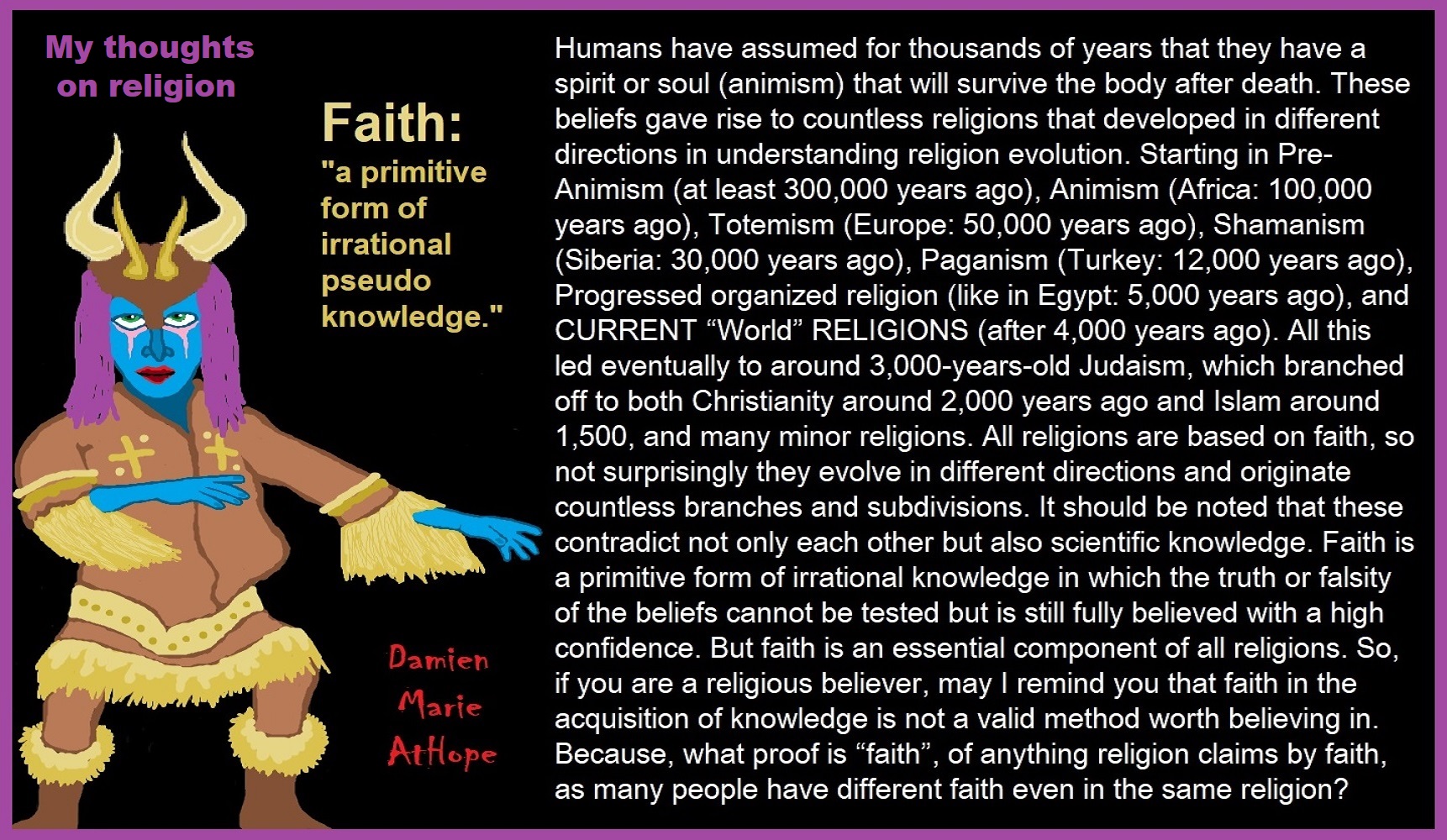
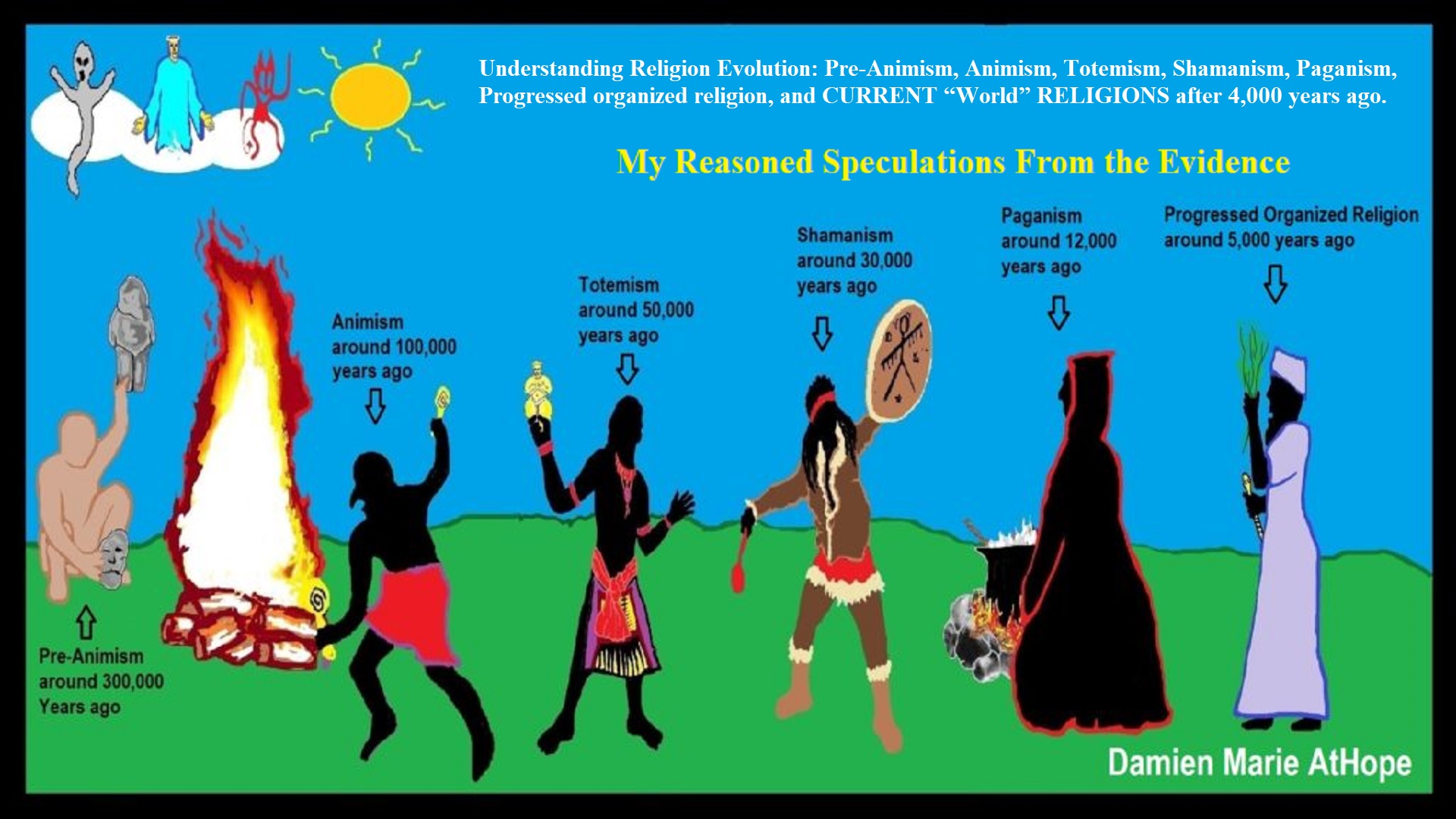
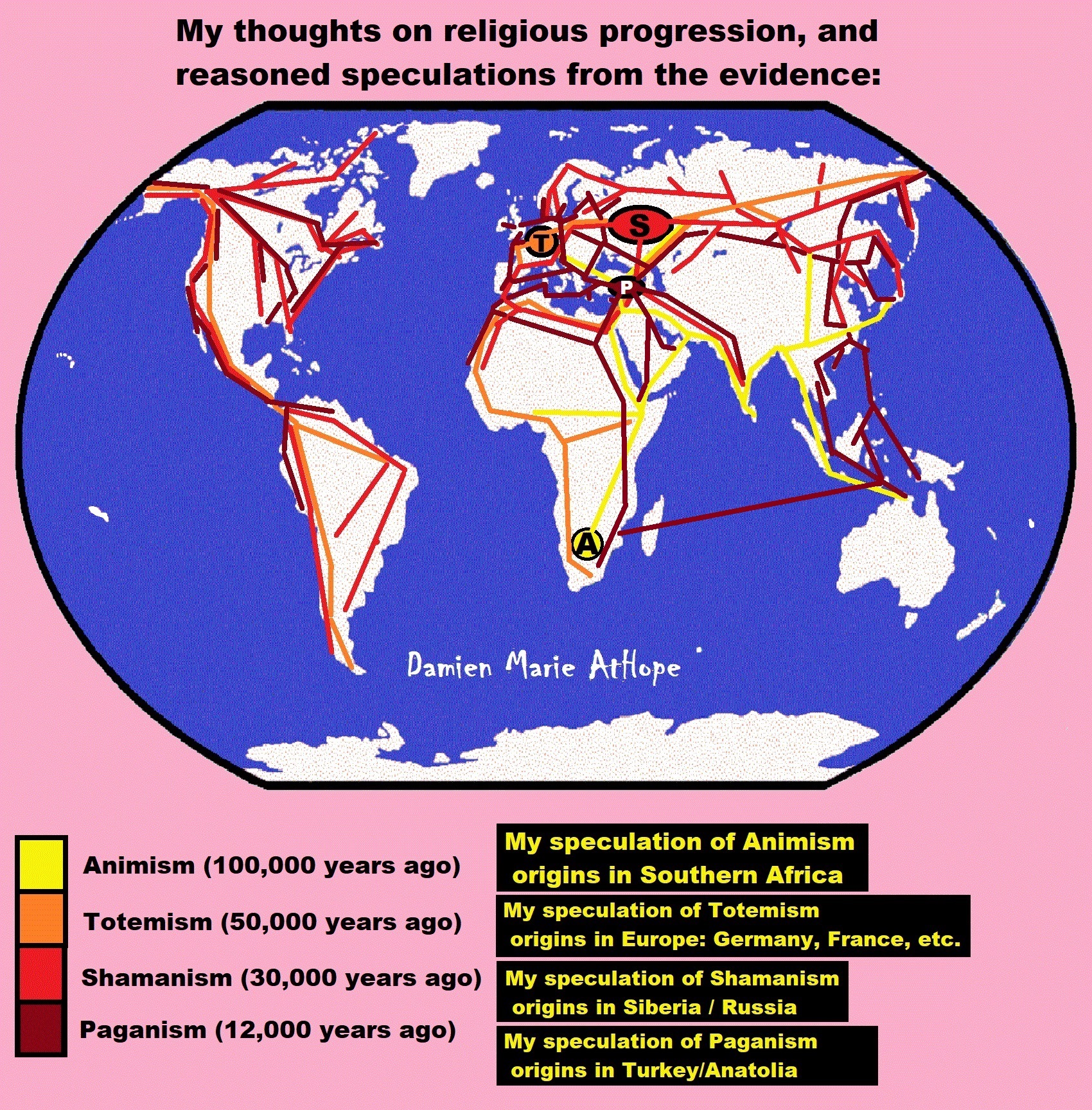
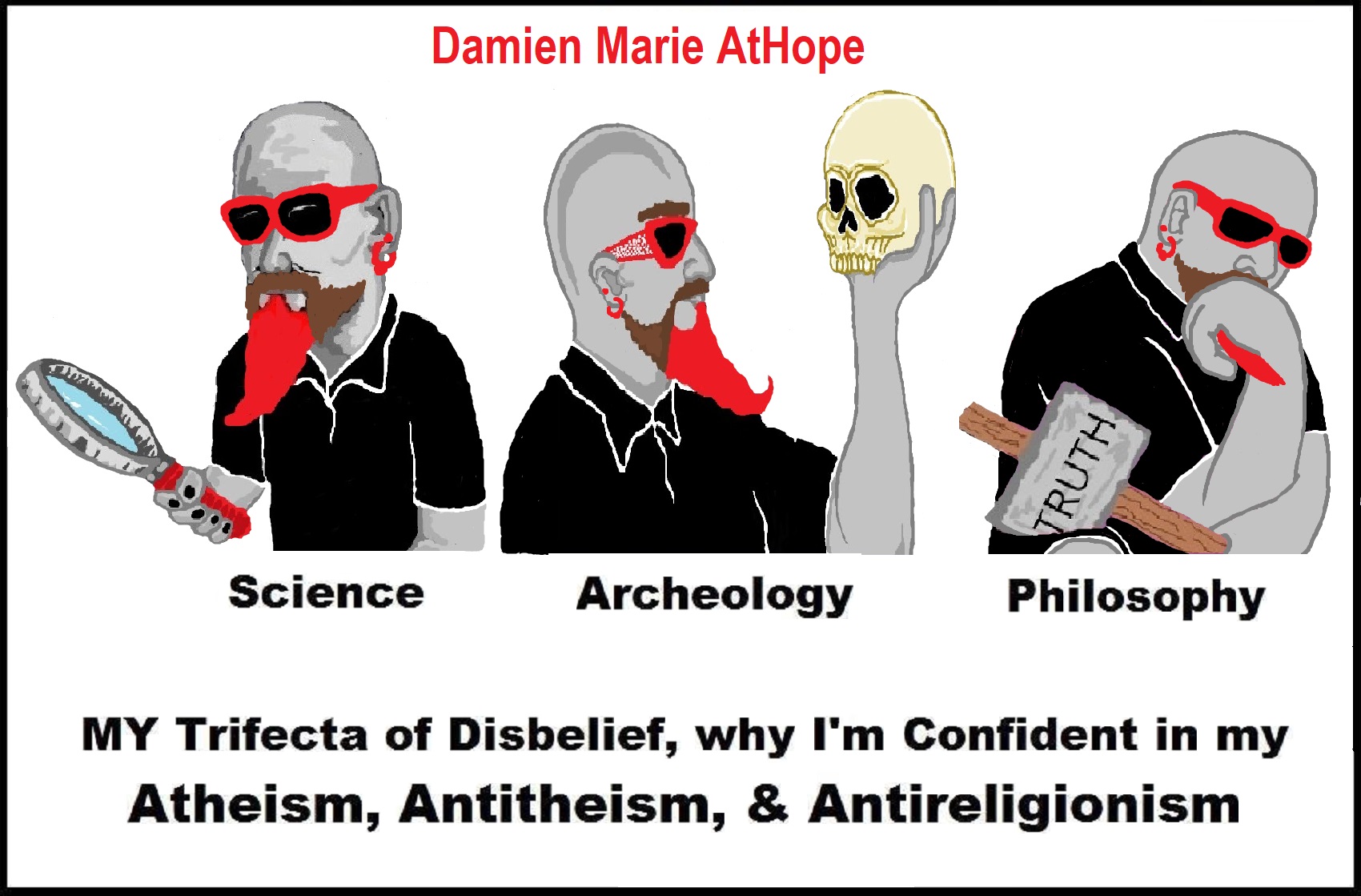
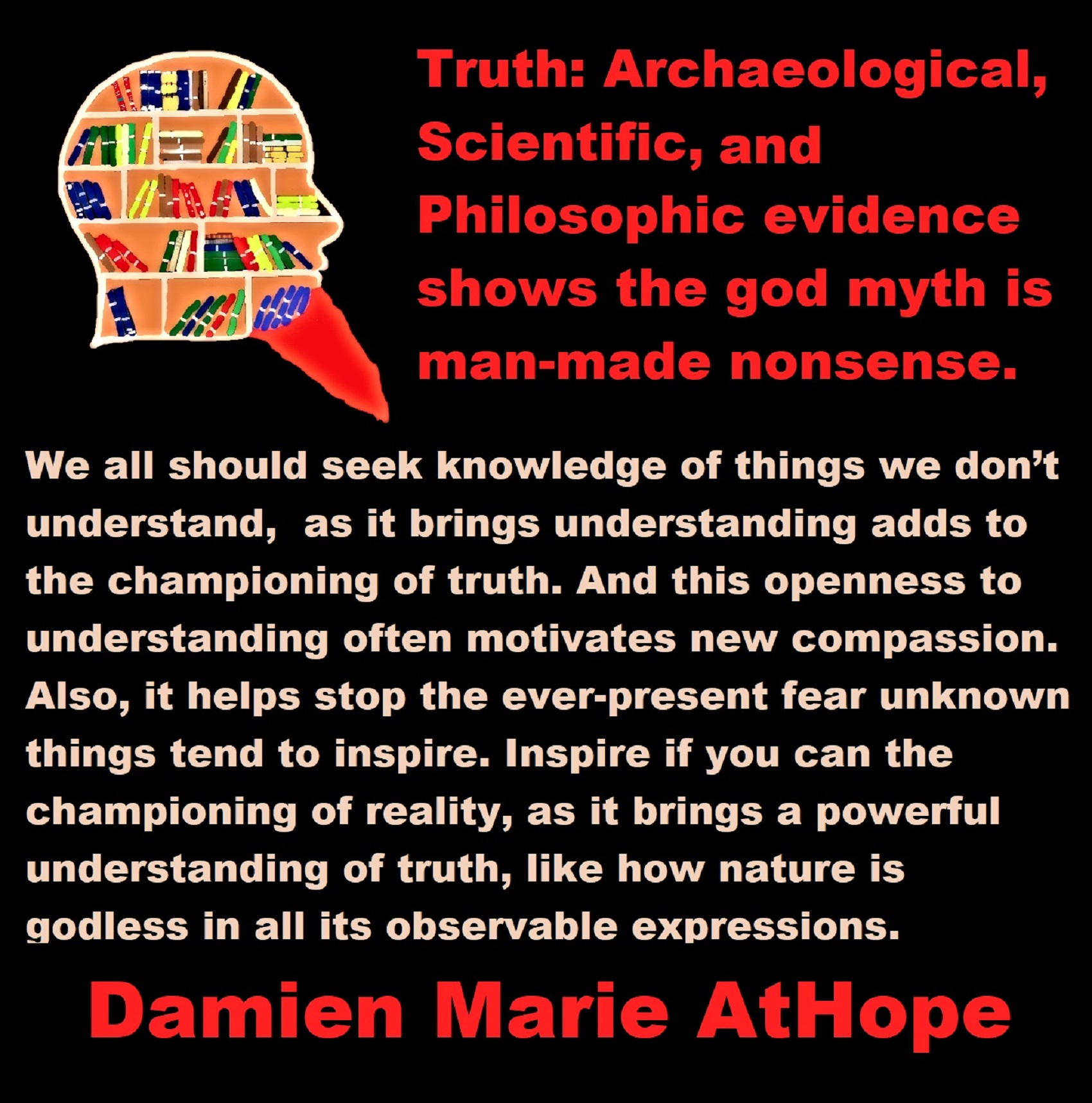
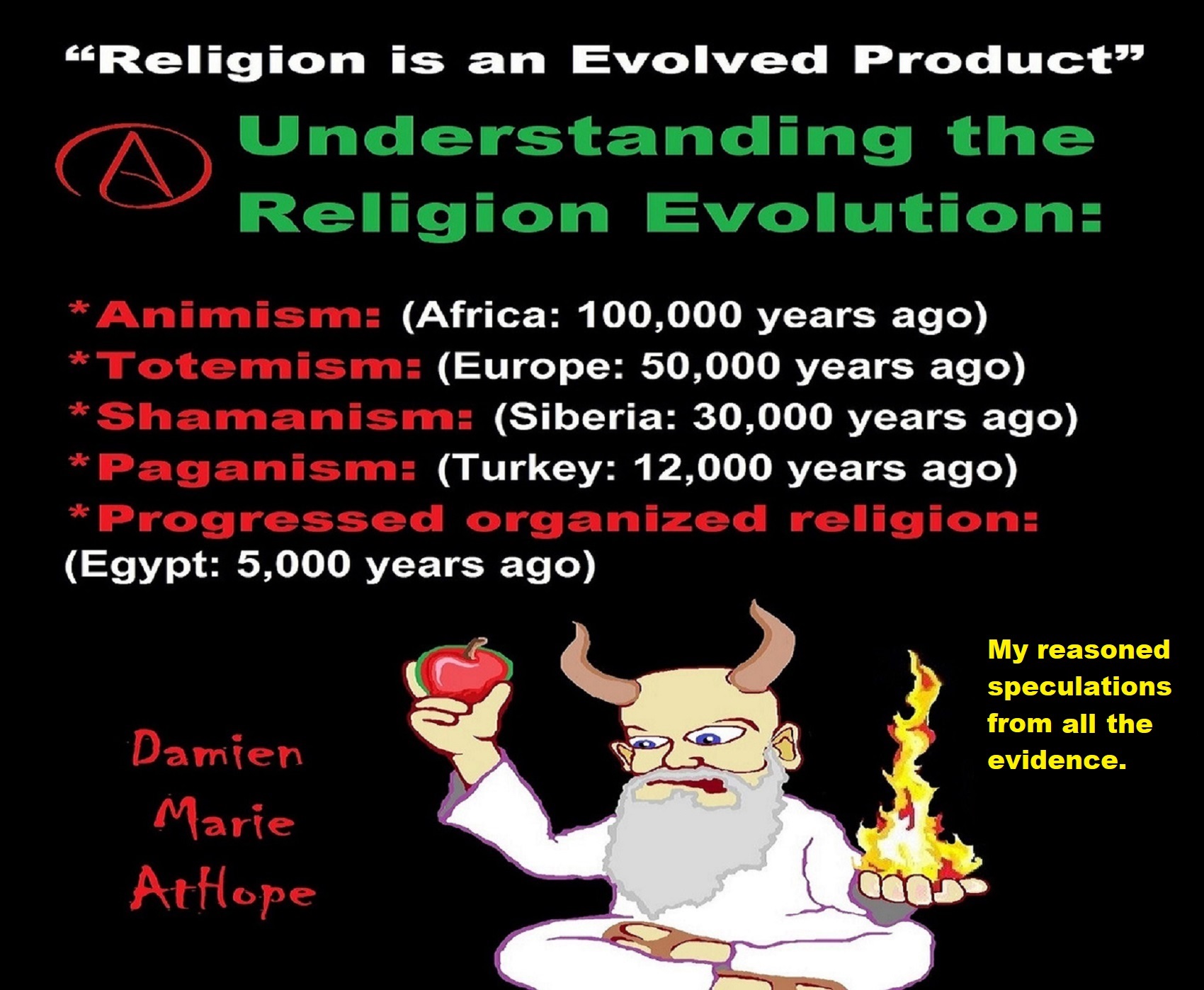
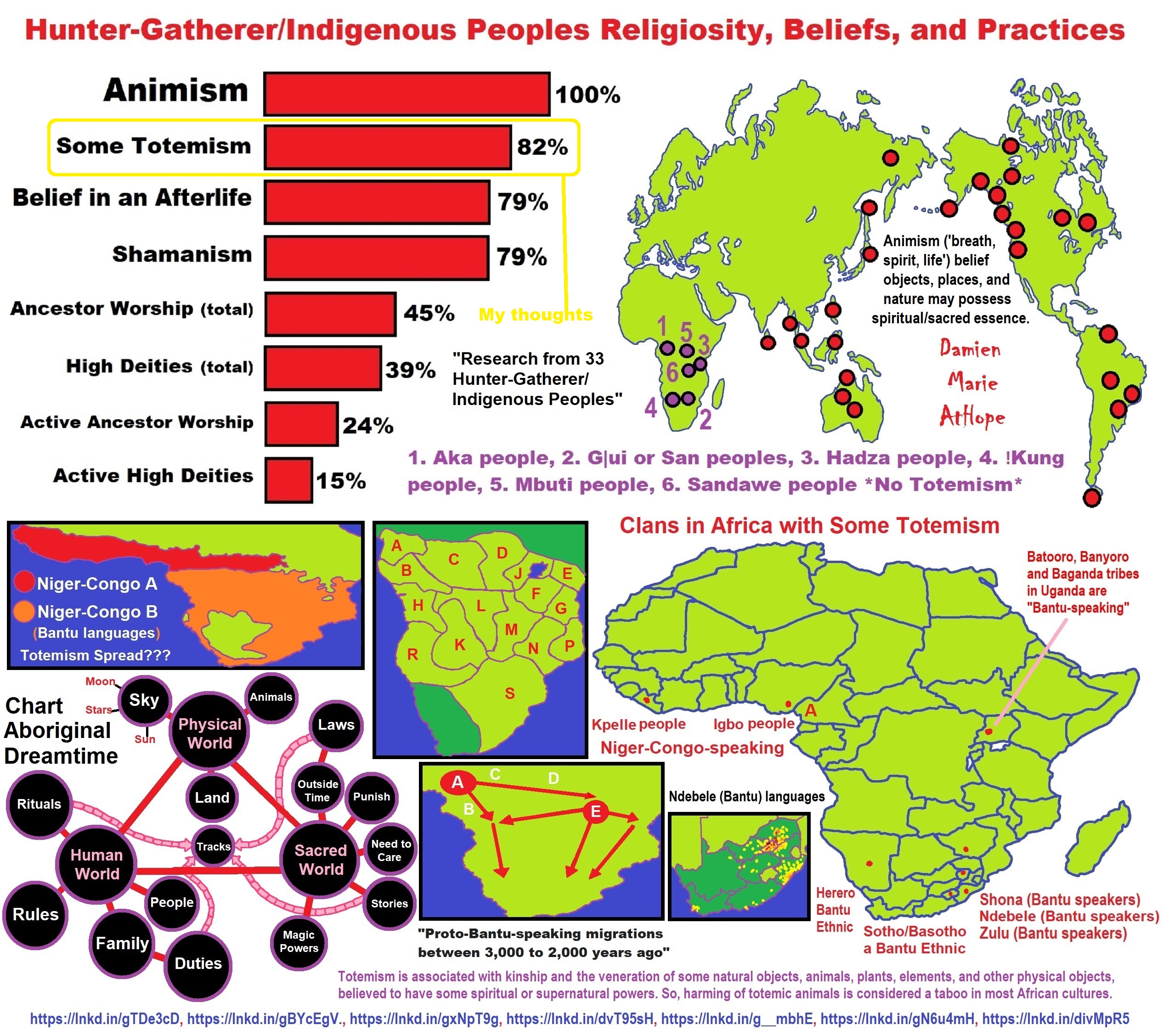

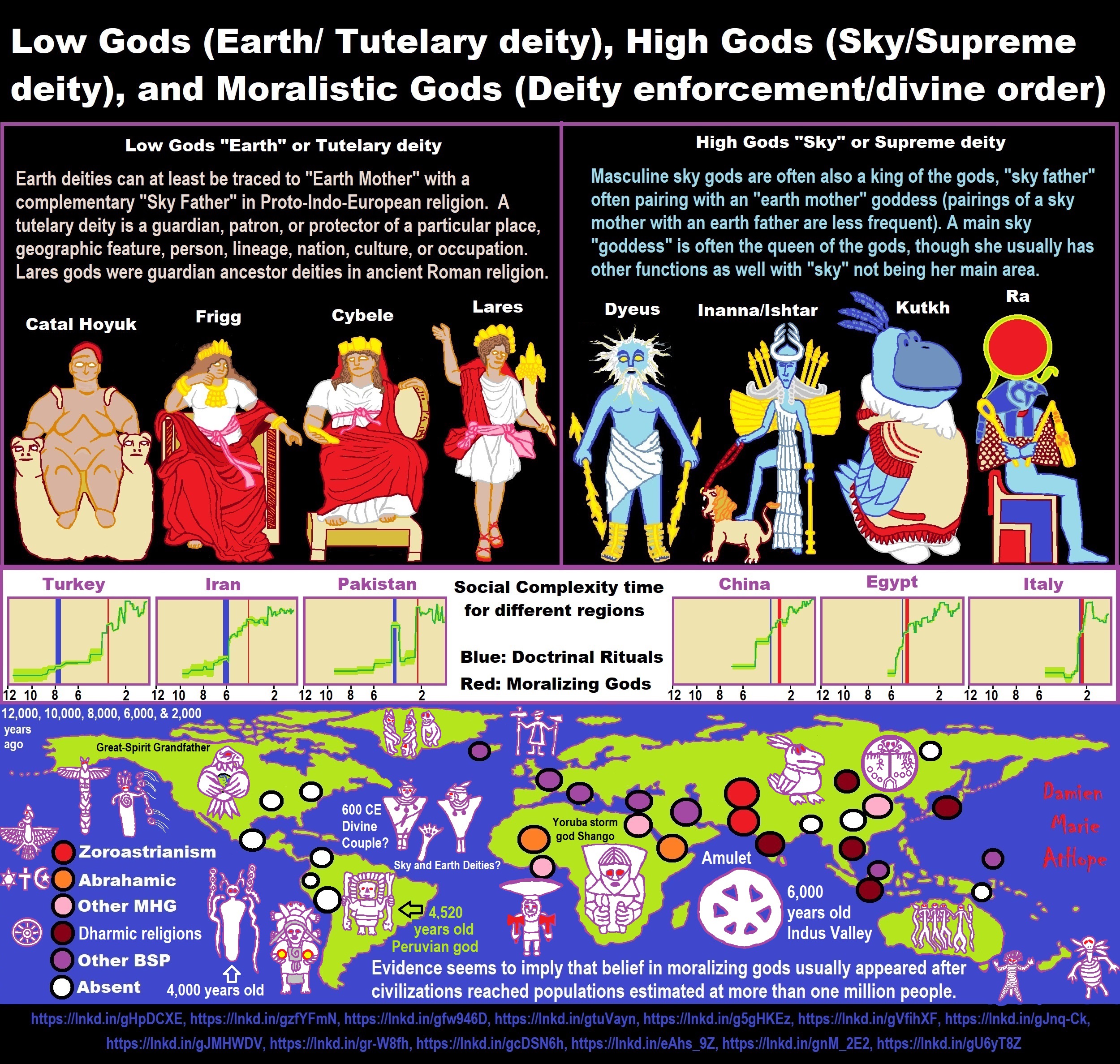
ref, ref, ref, ref, ref, ref, ref, ref, ref, ref, ref, ref, ref, ref, ref, ref, ref, ref, ref, ref, ref
Low Gods “Earth” or Tutelary deity and High Gods “Sky” or Supreme deity
“An Earth goddess is a deification of the Earth. Earth goddesses are often associated with the “chthonic” deities of the underworld. Ki and Ninhursag are Mesopotamian earth goddesses. In Greek mythology, the Earth is personified as Gaia, corresponding to Roman Terra, Indic Prithvi/Bhūmi, etc. traced to an “Earth Mother” complementary to the “Sky Father” in Proto-Indo-European religion. Egyptian mythology exceptionally has a sky goddess and an Earth god.” ref
“A mother goddess is a goddess who represents or is a personification of nature, motherhood, fertility, creation, destruction or who embodies the bounty of the Earth. When equated with the Earth or the natural world, such goddesses are sometimes referred to as Mother Earth or as the Earth Mother. In some religious traditions or movements, Heavenly Mother (also referred to as Mother in Heaven or Sky Mother) is the wife or feminine counterpart of the Sky father or God the Father.” ref
“Any masculine sky god is often also king of the gods, taking the position of patriarch within a pantheon. Such king gods are collectively categorized as “sky father” deities, with a polarity between sky and earth often being expressed by pairing a “sky father” god with an “earth mother” goddess (pairings of a sky mother with an earth father are less frequent). A main sky goddess is often the queen of the gods and may be an air/sky goddess in her own right, though she usually has other functions as well with “sky” not being her main. In antiquity, several sky goddesses in ancient Egypt, Mesopotamia, and the Near East were called Queen of Heaven. Neopagans often apply it with impunity to sky goddesses from other regions who were never associated with the term historically. The sky often has important religious significance. Many religions, both polytheistic and monotheistic, have deities associated with the sky.” ref
“In comparative mythology, sky father is a term for a recurring concept in polytheistic religions of a sky god who is addressed as a “father”, often the father of a pantheon and is often either a reigning or former King of the Gods. The concept of “sky father” may also be taken to include Sun gods with similar characteristics, such as Ra. The concept is complementary to an “earth mother“. “Sky Father” is a direct translation of the Vedic Dyaus Pita, etymologically descended from the same Proto-Indo-European deity name as the Greek Zeûs Pater and Roman Jupiter and Germanic Týr, Tir or Tiwaz, all of which are reflexes of the same Proto-Indo-European deity’s name, *Dyēus Ph₂tḗr. While there are numerous parallels adduced from outside of Indo-European mythology, there are exceptions (e.g. In Egyptian mythology, Nut is the sky mother and Geb is the earth father).” ref
Tutelary deity
“A tutelary (also tutelar) is a deity or spirit who is a guardian, patron, or protector of a particular place, geographic feature, person, lineage, nation, culture, or occupation. The etymology of “tutelary” expresses the concept of safety and thus of guardianship. In late Greek and Roman religion, one type of tutelary deity, the genius, functions as the personal deity or daimon of an individual from birth to death. Another form of personal tutelary spirit is the familiar spirit of European folklore.” ref
“A tutelary (also tutelar) in Korean shamanism, jangseung and sotdae were placed at the edge of villages to frighten off demons. They were also worshiped as deities. Seonangshin is the patron deity of the village in Korean tradition and was believed to embody the Seonangdang. In Philippine animism, Diwata or Lambana are deities or spirits that inhabit sacred places like mountains and mounds and serve as guardians. Such as: Maria Makiling is the deity who guards Mt. Makiling and Maria Cacao and Maria Sinukuan. In Shinto, the spirits, or kami, which give life to human bodies come from nature and return to it after death. Ancestors are therefore themselves tutelaries to be worshiped. And similarly, Native American beliefs such as Tonás, tutelary animal spirit among the Zapotec and Totems, familial or clan spirits among the Ojibwe, can be animals.” ref
“A tutelary (also tutelar) in Austronesian beliefs such as: Atua (gods and spirits of the Polynesian peoples such as the Māori or the Hawaiians), Hanitu (Bunun of Taiwan‘s term for spirit), Hyang (Kawi, Sundanese, Javanese, and Balinese Supreme Being, in ancient Java and Bali mythology and this spiritual entity, can be either divine or ancestral), Kaitiaki (New Zealand Māori term used for the concept of guardianship, for the sky, the sea, and the land), Kawas (mythology) (divided into 6 groups: gods, ancestors, souls of the living, spirits of living things, spirits of lifeless objects, and ghosts), Tiki (Māori mythology, Tiki is the first man created by either Tūmatauenga or Tāne and represents deified ancestors found in most Polynesian cultures). ” ref, ref, ref, ref, ref, ref, ref
Mesopotamian Tutelary Deities can be seen as ones related to City-States
“Historical city-states included Sumerian cities such as Uruk and Ur; Ancient Egyptian city-states, such as Thebes and Memphis; the Phoenician cities (such as Tyre and Sidon); the five Philistine city-states; the Berber city-states of the Garamantes; the city-states of ancient Greece (the poleis such as Athens, Sparta, Thebes, and Corinth); the Roman Republic (which grew from a city-state into a vast empire); the Italian city-states from the Middle Ages to the early modern period, such as Florence, Siena, Ferrara, Milan (which as they grew in power began to dominate neighboring cities) and Genoa and Venice, which became powerful thalassocracies; the Mayan and other cultures of pre-Columbian Mesoamerica (including cities such as Chichen Itza, Tikal, Copán and Monte Albán); the central Asian cities along the Silk Road; the city-states of the Swahili coast; Ragusa; states of the medieval Russian lands such as Novgorod and Pskov; and many others.” ref
“The Uruk period (ca. 4000 to 3100 BCE; also known as Protoliterate period) of Mesopotamia, named after the Sumerian city of Uruk, this period saw the emergence of urban life in Mesopotamia and the Sumerian civilization. City-States like Uruk and others had a patron tutelary City Deity along with a Priest-King.” ref
“Chinese folk religion, both past, and present, includes myriad tutelary deities. Exceptional individuals, highly cultivated sages, and prominent ancestors can be deified and honored after death. Lord Guan is the patron of military personnel and police, while Mazu is the patron of fishermen and sailors. Such as Tu Di Gong (Earth Deity) is the tutelary deity of a locality, and each individual locality has its own Earth Deity and Cheng Huang Gong (City God) is the guardian deity of an individual city, worshipped by local officials and locals since imperial times.” ref
“A tutelary (also tutelar) in Hinduism, personal tutelary deities are known as ishta-devata, while family tutelary deities are known as Kuladevata. Gramadevata are guardian deities of villages. Devas can also be seen as tutelary. Shiva is the patron of yogis and renunciants. City goddesses include: Mumbadevi (Mumbai), Sachchika (Osian); Kuladevis include: Ambika (Porwad), and Mahalakshmi. In NorthEast India Meitei mythology and religion (Sanamahism) of Manipur, there are various types of tutelary deities, among which Lam Lais are the most predominant ones. Tibetan Buddhism has Yidam as a tutelary deity. Dakini is the patron of those who seek knowledge.” ref
“A tutelary (also tutelar) The Greeks also thought deities guarded specific places: for instance, Athena was the patron goddess of the city of Athens. Socrates spoke of hearing the voice of his personal spirit or daimonion:
You have often heard me speak of an oracle or sign which comes to me … . This sign I have had ever since I was a child. The sign is a voice which comes to me and always forbids me to do something which I am going to do, but never commands me to do anything, and this is what stands in the way of my being a politician.” ref
“Tutelary deities who guard and preserve a place or a person are fundamental to ancient Roman religion. The tutelary deity of a man was his Genius, that of a woman her Juno. In the Imperial era, the Genius of the Emperor was a focus of Imperial cult. An emperor might also adopt a major deity as his personal patron or tutelary, as Augustus did Apollo. Precedents for claiming the personal protection of a deity were established in the Republican era, when for instance the Roman dictator Sulla advertised the goddess Victory as his tutelary by holding public games (ludi) in her honor.” ref
“Each town or city had one or more tutelary deities, whose protection was considered particularly vital in time of war and siege. Rome itself was protected by a goddess whose name was to be kept ritually secret on pain of death (for a supposed case, see Quintus Valerius Soranus). The Capitoline Triad of Juno, Jupiter, and Minerva were also tutelaries of Rome. The Italic towns had their own tutelary deities. Juno often had this function, as at the Latin town of Lanuvium and the Etruscan city of Veii, and was often housed in an especially grand temple on the arx (citadel) or other prominent or central location. The tutelary deity of Praeneste was Fortuna, whose oracle was renowned.” ref
“The Roman ritual of evocatio was premised on the belief that a town could be made vulnerable to military defeat if the power of its tutelary deity were diverted outside the city, perhaps by the offer of superior cult at Rome. The depiction of some goddesses such as the Magna Mater (Great Mother, or Cybele) as “tower-crowned” represents their capacity to preserve the city. A town in the provinces might adopt a deity from within the Roman religious sphere to serve as its guardian, or syncretize its own tutelary with such; for instance, a community within the civitas of the Remi in Gaul adopted Apollo as its tutelary, and at the capital of the Remi (present-day Rheims), the tutelary was Mars Camulus.” ref
Household deity (a kind of or related to a Tutelary deity)
“A household deity is a deity or spirit that protects the home, looking after the entire household or certain key members. It has been a common belief in paganism as well as in folklore across many parts of the world. Household deities fit into two types; firstly, a specific deity – typically a goddess – often referred to as a hearth goddess or domestic goddess who is associated with the home and hearth, such as the ancient Greek Hestia.” ref
“The second type of household deities are those that are not one singular deity, but a type, or species of animistic deity, who usually have lesser powers than major deities. This type was common in the religions of antiquity, such as the Lares of ancient Roman religion, the Gashin of Korean shamanism, and Cofgodas of Anglo-Saxon paganism. These survived Christianisation as fairy-like creatures existing in folklore, such as the Anglo-Scottish Brownie and Slavic Domovoy.” ref
“Household deities were usually worshipped not in temples but in the home, where they would be represented by small idols (such as the teraphim of the Bible, often translated as “household gods” in Genesis 31:19 for example), amulets, paintings, or reliefs. They could also be found on domestic objects, such as cosmetic articles in the case of Tawaret. The more prosperous houses might have a small shrine to the household god(s); the lararium served this purpose in the case of the Romans. The gods would be treated as members of the family and invited to join in meals, or be given offerings of food and drink.” ref
“In many religions, both ancient and modern, a god would preside over the home. Certain species, or types, of household deities, existed. An example of this was the Roman Lares. Many European cultures retained house spirits into the modern period. Some examples of these include:
- Brownie (Scotland and England) or Hob (England) / Kobold (Germany) / Goblin / Hobgoblin
- Domovoy (Slavic)
- Nisse (Norwegian or Danish) / Tomte (Swedish) / Tonttu (Finnish)
- Húsvættir (Norse)” ref
“Although the cosmic status of household deities was not as lofty as that of the Twelve Olympians or the Aesir, they were also jealous of their dignity and also had to be appeased with shrines and offerings, however humble. Because of their immediacy they had arguably more influence on the day-to-day affairs of men than the remote gods did. Vestiges of their worship persisted long after Christianity and other major religions extirpated nearly every trace of the major pagan pantheons. Elements of the practice can be seen even today, with Christian accretions, where statues to various saints (such as St. Francis) protect gardens and grottos. Even the gargoyles found on older churches, could be viewed as guardians partitioning a sacred space.” ref
“For centuries, Christianity fought a mop-up war against these lingering minor pagan deities, but they proved tenacious. For example, Martin Luther‘s Tischreden have numerous – quite serious – references to dealing with kobolds. Eventually, rationalism and the Industrial Revolution threatened to erase most of these minor deities, until the advent of romantic nationalism rehabilitated them and embellished them into objects of literary curiosity in the 19th century. Since the 20th century this literature has been mined for characters for role-playing games, video games, and other fantasy personae, not infrequently invested with invented traits and hierarchies somewhat different from their mythological and folkloric roots.” ref
“In contradistinction to both Herbert Spencer and Edward Burnett Tylor, who defended theories of animistic origins of ancestor worship, Émile Durkheim saw its origin in totemism. In reality, this distinction is somewhat academic, since totemism may be regarded as a particularized manifestation of animism, and something of a synthesis of the two positions was attempted by Sigmund Freud. In Freud’s Totem and Taboo, both totem and taboo are outward expressions or manifestations of the same psychological tendency, a concept which is complementary to, or which rather reconciles, the apparent conflict. Freud preferred to emphasize the psychoanalytic implications of the reification of metaphysical forces, but with particular emphasis on its familial nature. This emphasis underscores, rather than weakens, the ancestral component.” ref
“William Edward Hearn, a noted classicist, and jurist, traced the origin of domestic deities from the earliest stages as an expression of animism, a belief system thought to have existed also in the neolithic, and the forerunner of Indo-European religion. In his analysis of the Indo-European household, in Chapter II “The House Spirit”, Section 1, he states:
The belief which guided the conduct of our forefathers was … the spirit rule of dead ancestors.” ref
“In Section 2 he proceeds to elaborate:
It is thus certain that the worship of deceased ancestors is a vera causa, and not a mere hypothesis. …
In the other European nations, the Slavs, the Teutons, and the Kelts, the House Spirit appears with no less distinctness. … [T]he existence of that worship does not admit of doubt. … The House Spirits had a multitude of other names which it is needless here to enumerate, but all of which are more or less expressive of their friendly relations with man. … In [England] … [h]e is the Brownie. … In Scotland this same Brownie is well known. He is usually described as attached to particular families, with whom he has been known to reside for centuries, threshing the corn, cleaning the house, and performing similar household tasks. His favorite gratification was milk and honey.” ref

Hinduism around 3,700 to 3,500 years old. ref
Judaism around 3,450 or 3,250 years old. (The first writing in the bible was “Paleo-Hebrew” dated to around 3,000 years ago Khirbet Qeiyafa is the site of an ancient fortress city overlooking the Elah Valley. And many believe the religious Jewish texts were completed around 2,500) ref, ref
Judaism is around 3,450 or 3,250 years old. (“Paleo-Hebrew” 3,000 years ago and Torah 2,500 years ago)
“Judaism is an Abrahamic, its roots as an organized religion in the Middle East during the Bronze Age. Some scholars argue that modern Judaism evolved from Yahwism, the religion of ancient Israel and Judah, by the late 6th century BCE, and is thus considered to be one of the oldest monotheistic religions.” ref
“Yahwism is the name given by modern scholars to the religion of ancient Israel, essentially polytheistic, with a plethora of gods and goddesses. Heading the pantheon was Yahweh, the national god of the Israelite kingdoms of Israel and Judah, with his consort, the goddess Asherah; below them were second-tier gods and goddesses such as Baal, Shamash, Yarikh, Mot, and Astarte, all of whom had their own priests and prophets and numbered royalty among their devotees, and a third and fourth tier of minor divine beings, including the mal’ak, the messengers of the higher gods, who in later times became the angels of Judaism, Christianity and Islam. Yahweh, however, was not the ‘original’ god of Israel “Isra-El”; it is El, the head of the Canaanite pantheon, whose name forms the basis of the name “Israel”, and none of the Old Testament patriarchs, the tribes of Israel, the Judges, or the earliest monarchs, have a Yahwistic theophoric name (i.e., one incorporating the name of Yahweh).” ref
“El is a Northwest Semitic word meaning “god” or “deity“, or referring (as a proper name) to any one of multiple major ancient Near Eastern deities. A rarer form, ‘ila, represents the predicate form in Old Akkadian and in Amorite. The word is derived from the Proto-Semitic *ʔil-, meaning “god”. Specific deities known as ‘El or ‘Il include the supreme god of the ancient Canaanite religion and the supreme god of East Semitic speakers in Mesopotamia’s Early Dynastic Period. ʼĒl is listed at the head of many pantheons. In some Canaanite and Ugaritic sources, ʼĒl played a role as father of the gods, of creation, or both. For example, in the Ugaritic texts, ʾil mlk is understood to mean “ʼĒl the King” but ʾil hd as “the god Hadad“. The Semitic root ʾlh (Arabic ʾilāh, Aramaic ʾAlāh, ʾElāh, Hebrew ʾelōah) may be ʾl with a parasitic h, and ʾl may be an abbreviated form of ʾlh. In Ugaritic the plural form meaning “gods” is ʾilhm, equivalent to Hebrew ʾelōhîm “powers”. In the Hebrew texts this word is interpreted as being semantically singular for “god” by biblical commentators. However the documentary hypothesis for the Old Testament (corresponds to the Jewish Torah) developed originally in the 1870s, identifies these that different authors – the Jahwist, Elohist, Deuteronomist, and the Priestly source – were responsible for editing stories from a polytheistic religion into those of a monotheistic religion. Inconsistencies that arise between monotheism and polytheism in the texts are reflective of this hypothesis.” ref
Jainism around 2,599 – 2,527 years old. ref
Confucianism around 2,600 – 2,551 years old. ref
Buddhism around 2,563/2,480 – 2,483/2,400 years old. ref
Christianity around 2,o00 years old. ref
Shinto around 1,305 years old. ref
Islam around 1407–1385 years old. ref

Knowledge to Ponder:
Stars/Astrology:
- Possibly, around 30,000 years ago (in simpler form) to 6,000 years ago, Stars/Astrology are connected to Ancestors, Spirit Animals, and Deities.
- The star also seems to be a possible proto-star for Star of Ishtar, Star of Inanna, or Star of Venus.
- Around 7,000 to 6,000 years ago, Star Constellations/Astrology have connections to the “Kurgan phenomenon” of below-ground “mound” stone/wood burial structures and “Dolmen phenomenon” of above-ground stone burial structures.
- Around 6,500–5,800 years ago, The Northern Levant migrations into Jordon and Israel in the Southern Levant brought new cultural and religious transfer from Turkey and Iran.
- “The Ghassulian Star,” a mysterious 6,000-year-old mural from Jordan may have connections to the European paganstic kurgan/dolmens phenomenon.
“Astrology is a range of divinatory practices, recognized as pseudoscientific since the 18th century, that claim to discern information about human affairs and terrestrial events by studying the apparent positions of celestial objects. Different cultures have employed forms of astrology since at least the 2nd millennium BCE, these practices having originated in calendrical systems used to predict seasonal shifts and to interpret celestial cycles as signs of divine communications. Most, if not all, cultures have attached importance to what they observed in the sky, and some—such as the Hindus, Chinese, and the Maya—developed elaborate systems for predicting terrestrial events from celestial observations. Western astrology, one of the oldest astrological systems still in use, can trace its roots to 19th–17th century BCE Mesopotamia, from where it spread to Ancient Greece, Rome, the Islamicate world and eventually Central and Western Europe. Contemporary Western astrology is often associated with systems of horoscopes that purport to explain aspects of a person’s personality and predict significant events in their lives based on the positions of celestial objects; the majority of professional astrologers rely on such systems.” ref
Around 5,500 years ago, Science evolves, The first evidence of science was 5,500 years ago and was demonstrated by a body of empirical, theoretical, and practical knowledge about the natural world. ref
Around 5,000 years ago, Origin of Logics is a Naturalistic Observation (principles of valid reasoning, inference, & demonstration) ref
Around 4,150 to 4,000 years ago: The earliest surviving versions of the Sumerian Epic of Gilgamesh, which was originally titled “He who Saw the Deep” (Sha naqba īmuru) or “Surpassing All Other Kings” (Shūtur eli sharrī) were written. ref
Hinduism:
- 3,700 years ago or so, the oldest of the Hindu Vedas (scriptures), the Rig Veda was composed.
- 3,500 years ago or so, the Vedic Age began in India after the collapse of the Indus Valley Civilization.
Judaism:
- around 3,000 years ago, the first writing in the bible was “Paleo-Hebrew”
- around 2,500 years ago, many believe the religious Jewish texts were completed
Myths: The bible inspired religion is not just one religion or one myth but a grouping of several religions and myths
- Around 3,450 or 3,250 years ago, according to legend, is the traditionally accepted period in which the Israelite lawgiver, Moses, provided the Ten Commandments.
- Around 2,500 to 2,400 years ago, a collection of ancient religious writings by the Israelites based primarily upon the Hebrew Bible, Tanakh, or Old Testament is the first part of Christianity’s bible.
- Around 2,400 years ago, the most accepted hypothesis is that the canon was formed in stages, first the Pentateuch (Torah).
- Around 2,140 to 2,116 years ago, the Prophets was written during the Hasmonean dynasty, and finally the remaining books.
- Christians traditionally divide the Old Testament into four sections:
- The first five books or Pentateuch (Torah).
- The proposed history books telling the history of the Israelites from their conquest of Canaan to their defeat and exile in Babylon.
- The poetic and proposed “Wisdom books” dealing, in various forms, with questions of good and evil in the world.
- The books of the biblical prophets, warning of the consequences of turning away from God:
- Henotheism:
- Exodus 20:23 “You shall not make other gods besides Me (not saying there are no other gods just not to worship them); gods of silver or gods of gold, you shall not make for yourselves.”
- Polytheism:
- Judges 10:6 “Then the sons of Israel again did evil in the sight of the LORD, served the Baals and the Ashtaroth, the gods of Aram, the gods of Sidon, the gods of Moab, the gods of the sons of Ammon, and the gods of the Philistines; thus they forsook the LORD and did not serve Him.”
- 1 Corinthians 8:5 “For even if there are so-called gods whether in heaven or on earth, as indeed there are many gods and many lords.”
- Monotheism:
- Isaiah 43:10 “You are my witnesses,” declares the LORD, “and my servant whom I have chosen, so that you may know and believe me and understand that I am he. Before me no god was formed, nor will there be one after me.
Around 2,570 to 2,270 Years Ago, there is a confirmation of atheistic doubting as well as atheistic thinking, mainly by Greek philosophers. However, doubting gods is likely as old as the invention of gods and should destroy the thinking that belief in god(s) is the “default belief”. The Greek word is apistos (a “not” and pistos “faithful,”), thus not faithful or faithless because one is unpersuaded and unconvinced by a god(s) claim. Short Definition: unbelieving, unbeliever, or unbelief.
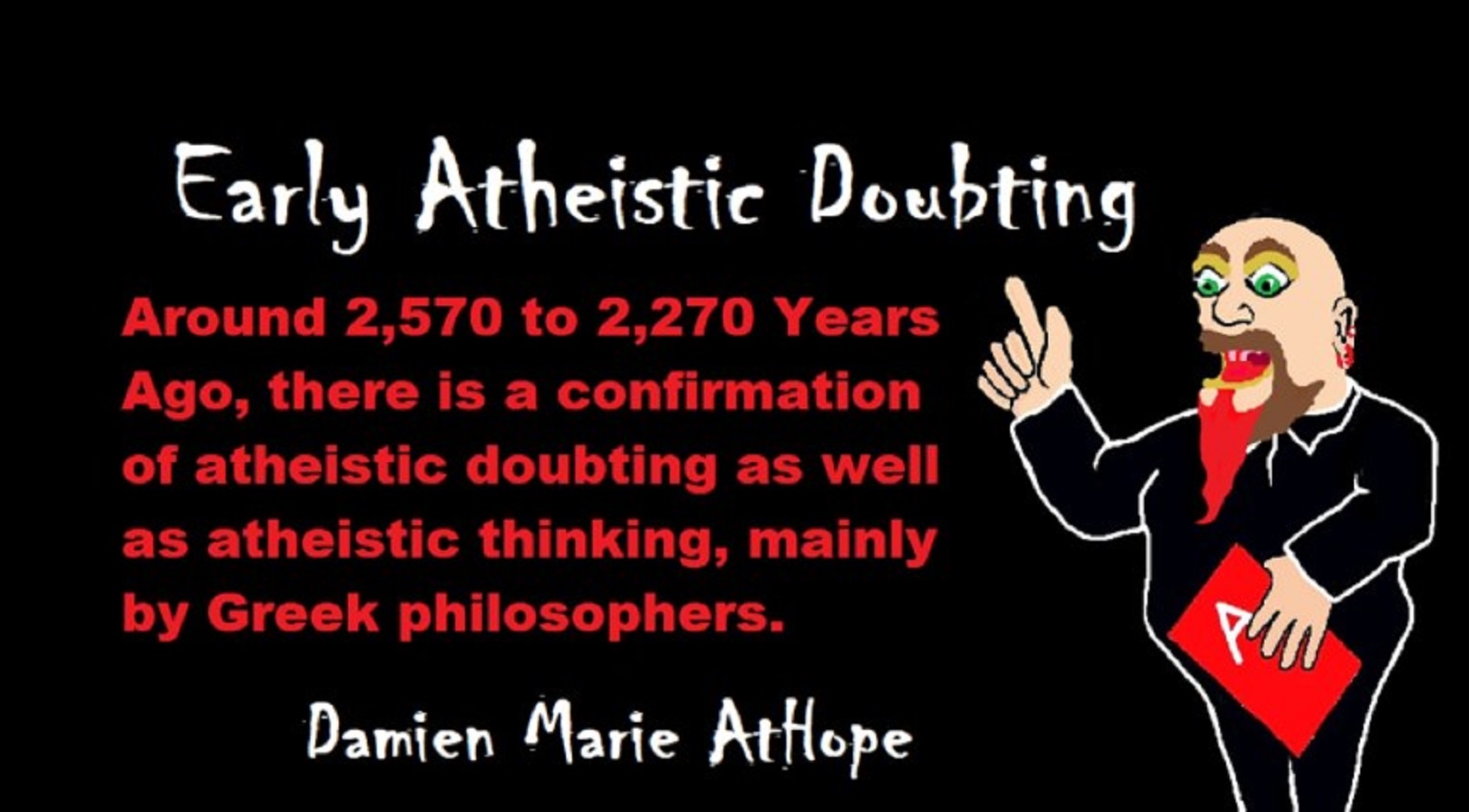
Expressions of Atheistic Thinking:
- Around 2,600 years ago, Ajita Kesakambali, ancient Indian philosopher, who is the first known proponent of Indian materialism. ref
- Around 2,535 to 2,475 years ago, Heraclitus, Greek pre-Socratic philosopher, a native of the Greek city Ephesus, Ionia, on the coast of Anatolia, also known as Asia Minor or modern Turkey. ref
- Around 2,500 to 2,400 years ago, according to The Story of Civilization book series certain African pygmy tribes have no identifiable gods, spirits, or religious beliefs or rituals, and even what burials accrue are without ceremony. ref
- Around 2,490 to 2,430 years ago, Empedocles, Greek pre-Socratic philosopher and a citizen of Agrigentum, a Greek city in Sicily. ref
- Around 2,460 to 2,370 years ago, Democritus, Greek pre-Socratic philosopher considered to be the “father of modern science” possibly had some disbelief amounting to atheism. ref
- Around 2,399 years ago or so, Socrates, a famous Greek philosopher was tried for sinfulness by teaching doubt of state gods. ref
- Around 2,341 to 2,270 years ago, Epicurus, a Greek philosopher known for composing atheistic critics and famously stated, “Is God willing to prevent evil, but not able? Then he is not omnipotent. Is he able, but not willing? Then he is malevolent. Is he both able and willing? Then whence cometh evil? Is he neither able nor willing? Then why call him god?” ref
This last expression by Epicurus, seems to be an expression of Axiological Atheism. To understand and utilize value or actually possess “Value Conscious/Consciousness” to both give a strong moral “axiological” argument (the problem of evil) as well as use it to fortify humanism and positive ethical persuasion of human helping and care responsibilities. Because value-blindness gives rise to sociopathic/psychopathic evil.

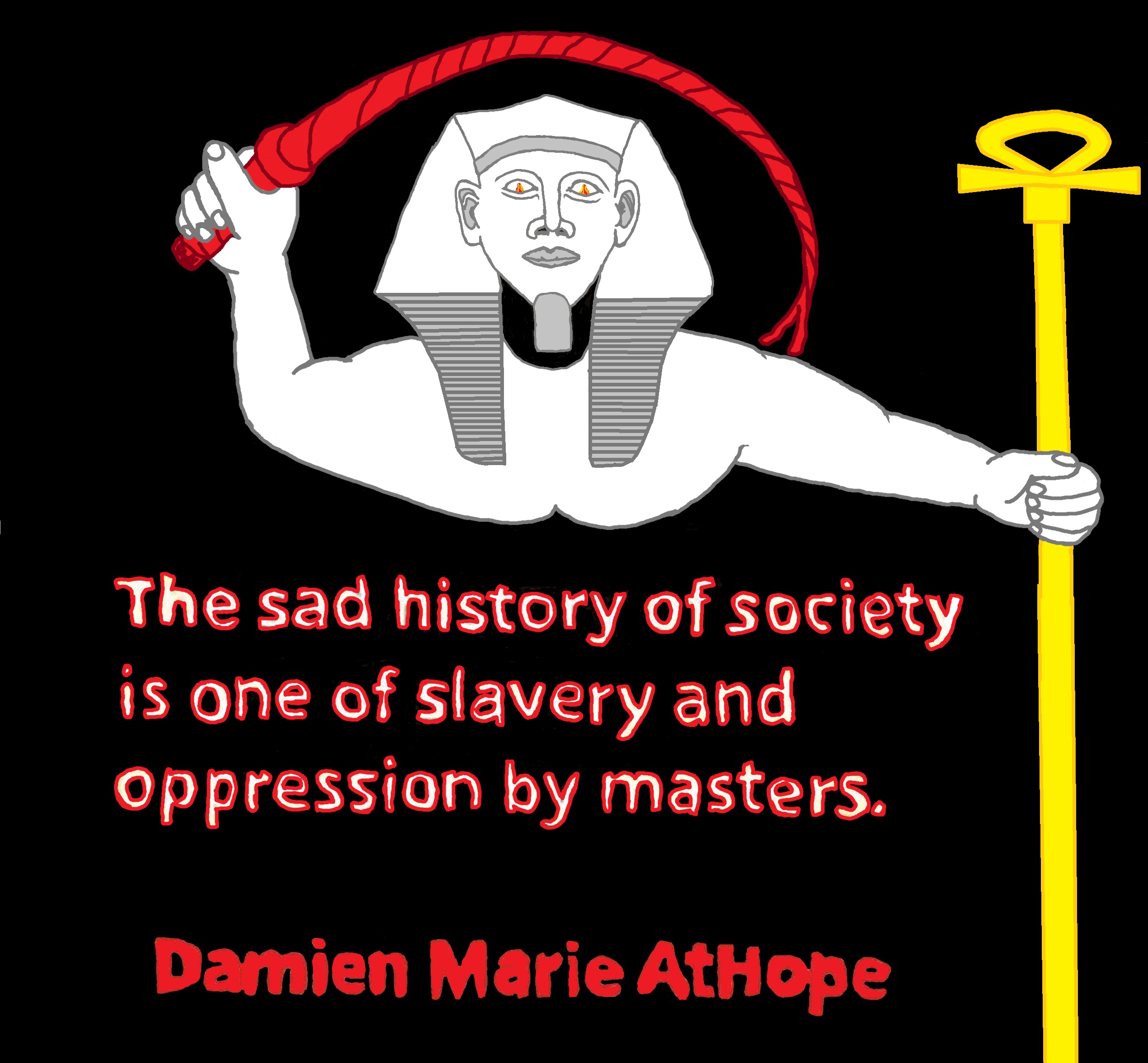
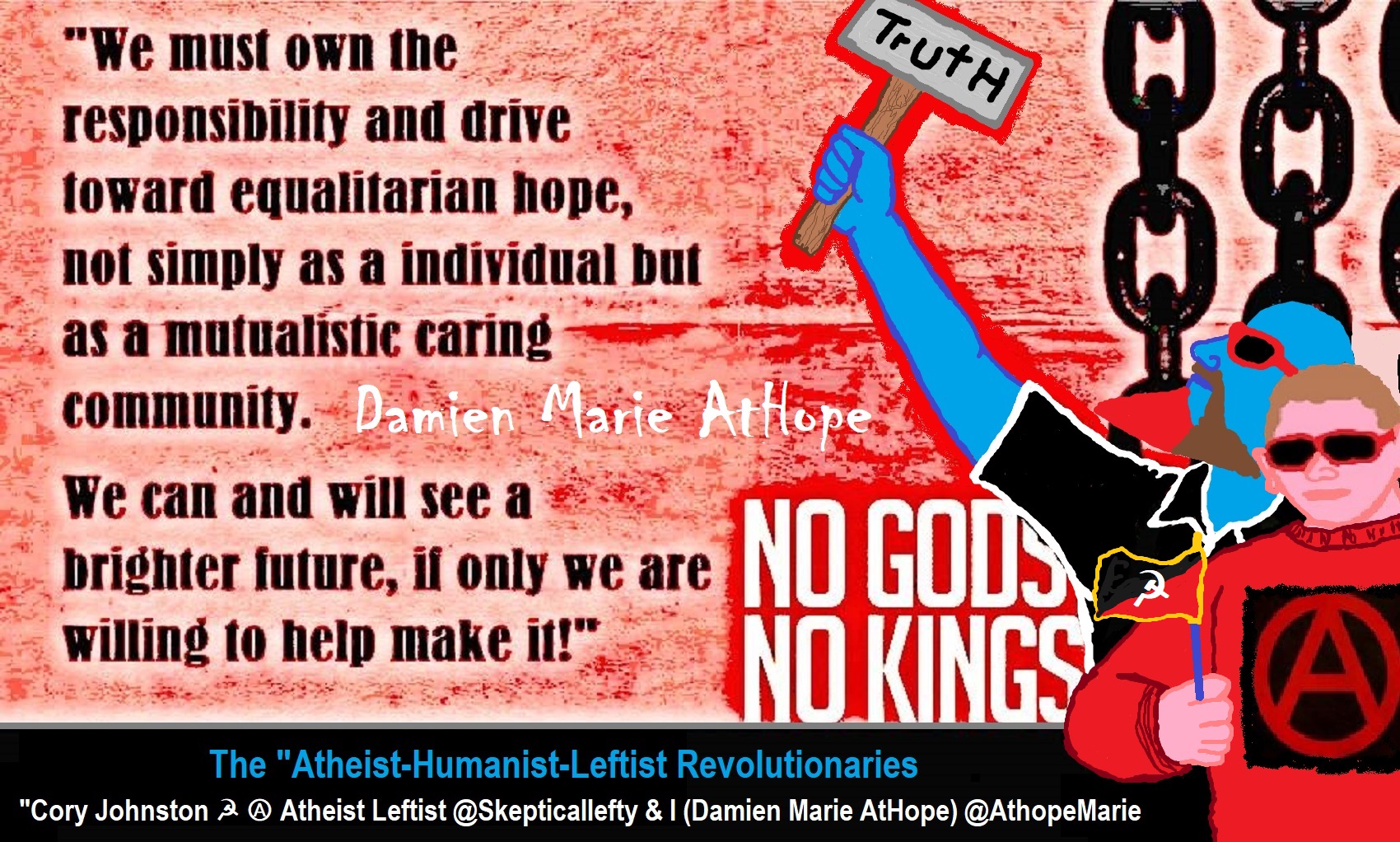
While hallucinogens are associated with shamanism, it is alcohol that is associated with paganism.
The Atheist-Humanist-Leftist Revolutionaries Shows in the prehistory series:
Show two: Pre-animism 300,000 years old and animism 100,000 years old: related to “Anarchism and Socialism”
Show tree: Totemism 50,000 years old: related to “Anarchism and Socialism”
Show four: Shamanism 30,000 years old: related to “Anarchism and Socialism”
Show five: Paganism 12,000 years old: related to “Anarchism and Socialism”
Show six: Emergence of hierarchy, sexism, slavery, and the new male god dominance: Paganism 7,000-5,000 years old: related to “Anarchism and Socialism” (Capitalism) (World War 0) Elite and their slaves!
Prehistory: related to “Anarchism and Socialism” the division of labor, power, rights, and recourses: VIDEO
Pre-animism 300,000 years old and animism 100,000 years old: related to “Anarchism and Socialism”: VIDEO
Totemism 50,000 years old: related to “Anarchism and Socialism”: VIDEO
Shamanism 30,000 years old: related to “Anarchism and Socialism”: VIDEO
Paganism 12,000 years old: related to “Anarchism and Socialism” (Pre-Capitalism): VIDEO
Paganism 7,000-5,000 years old: related to “Anarchism and Socialism” (Capitalism) (World War 0) Elite and their slaves: VIEDO
Paganism 5,000 years old: progressed organized religion and the state: related to “Anarchism and Socialism” (Kings and the Rise of the State): VIEDO
Paganism 4,000 years old: related to “Anarchism and Socialism” (First Moralistic gods, then the Origin time of Monotheism): VIEDO
I do not hate simply because I challenge and expose myths or lies any more than others being thought of as loving simply because of the protection and hiding from challenge their favored myths or lies.
The truth is best championed in the sunlight of challenge.
An archaeologist once said to me “Damien religion and culture are very different”
My response, So are you saying that was always that way, such as would you say Native Americans’ cultures are separate from their religions? And do you think it always was the way you believe?
I had said that religion was a cultural product. That is still how I see it and there are other archaeologists that think close to me as well. Gods too are the myths of cultures that did not understand science or the world around them, seeing magic/supernatural everywhere.
I personally think there is a goddess and not enough evidence to support a male god at Çatalhöyük but if there was both a male and female god and goddess then I know the kind of gods they were like Proto-Indo-European mythology.
This series idea was addressed in, Anarchist Teaching as Free Public Education or Free Education in the Public: VIDEO
Our 12 video series: Organized Oppression: Mesopotamian State Force and the Politics of power (9,000-4,000 years ago), is adapted from: The Complete and Concise History of the Sumerians and Early Bronze Age Mesopotamia (7000-2000 BC): https://www.youtube.com/watch?v=szFjxmY7jQA by “History with Cy“
Show #1: Mesopotamian State Force and the Politics of Power (Samarra, Halaf, Ubaid)
Show #2: Mesopotamian State Force and the Politics of Power
Show #3: Mesopotamian State Force and the Politics of Power (Uruk and the First Cities)
Show #4: Mesopotamian State Force and the Politics of Power (First Kings)
Show #5: Mesopotamian State Force and the Politics of Power (Early Dynastic Period)
Show #6: Mesopotamian State Force and the Politics of Power
Show #7: Mesopotamian State Force and the Politics of Power (Sargon and Akkadian Rule)
Show #9: Mesopotamian State Force and the Politics of Power (Gudea of Lagash and Utu-hegal)
Show #12: Mesopotamian State Force and the Politics of Power (Aftermath and Legacy of Sumer)
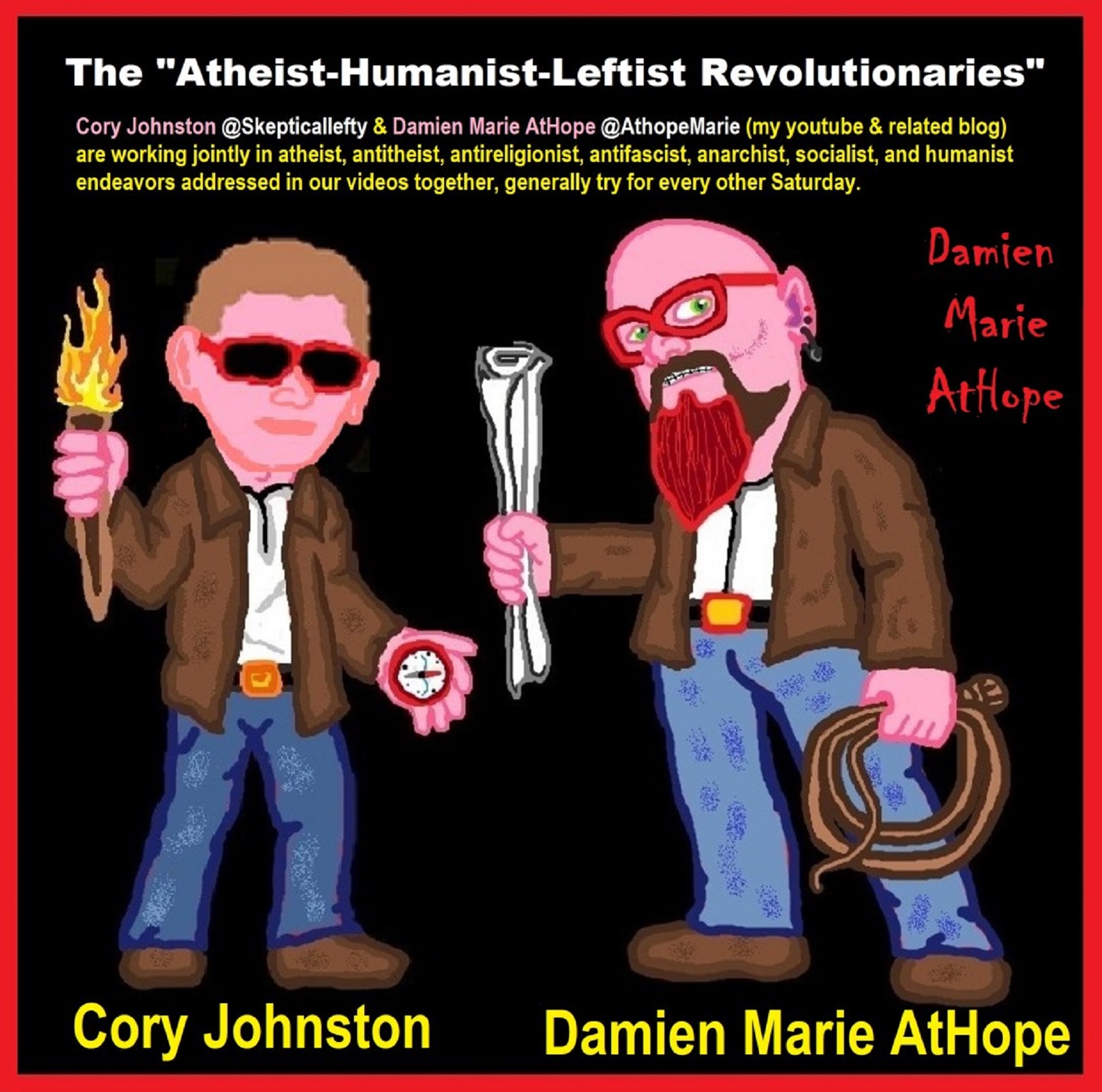
The “Atheist-Humanist-Leftist Revolutionaries”
Cory Johnston ☭ Ⓐ Atheist Leftist @Skepticallefty & I (Damien Marie AtHope) @AthopeMarie (my YouTube & related blog) are working jointly in atheist, antitheist, antireligionist, antifascist, anarchist, socialist, and humanist endeavors in our videos together, generally, every other Saturday.
Why Does Power Bring Responsibility?
Think, how often is it the powerless that start wars, oppress others, or commit genocide? So, I guess the question is to us all, to ask, how can power not carry responsibility in a humanity concept? I know I see the deep ethical responsibility that if there is power their must be a humanistic responsibility of ethical and empathic stewardship of that power. Will I be brave enough to be kind? Will I possess enough courage to be compassionate? Will my valor reach its height of empathy? I as everyone, earns our justified respect by our actions, that are good, ethical, just, protecting, and kind. Do I have enough self-respect to put my love for humanity’s flushing, over being brought down by some of its bad actors? May we all be the ones doing good actions in the world, to help human flourishing.
I create the world I want to live in, striving for flourishing. Which is not a place but a positive potential involvement and promotion; a life of humanist goal precision. To master oneself, also means mastering positive prosocial behaviors needed for human flourishing. I may have lost a god myth as an atheist, but I am happy to tell you, my friend, it is exactly because of that, leaving the mental terrorizer, god belief, that I truly regained my connected ethical as well as kind humanity.
Cory and I will talk about prehistory and theism, addressing the relevance to atheism, anarchism, and socialism.
At the same time as the rise of the male god, 7,000 years ago, there was also the very time there was the rise of violence, war, and clans to kingdoms, then empires, then states. It is all connected back to 7,000 years ago, and it moved across the world.
Cory Johnston: https://damienmarieathope.com/2021/04/cory-johnston-mind-of-a-skeptical-leftist/?v=32aec8db952d
The Mind of a Skeptical Leftist (YouTube)
Cory Johnston: Mind of a Skeptical Leftist @Skepticallefty
The Mind of a Skeptical Leftist By Cory Johnston: “Promoting critical thinking, social justice, and left-wing politics by covering current events and talking to a variety of people. Cory Johnston has been thoughtfully talking to people and attempting to promote critical thinking, social justice, and left-wing politics.” http://anchor.fm/skepticalleft
Cory needs our support. We rise by helping each other.
Cory Johnston ☭ Ⓐ @Skepticallefty Evidence-based atheist leftist (he/him) Producer, host, and co-host of 4 podcasts @skeptarchy @skpoliticspod and @AthopeMarie
Damien Marie AtHope (“At Hope”) Axiological Atheist, Anti-theist, Anti-religionist, Secular Humanist. Rationalist, Writer, Artist, Poet, Philosopher, Advocate, Activist, Psychology, and Armchair Archaeology/Anthropology/Historian.
Damien is interested in: Freedom, Liberty, Justice, Equality, Ethics, Humanism, Science, Atheism, Antiteism, Antireligionism, Ignosticism, Left-Libertarianism, Anarchism, Socialism, Mutualism, Axiology, Metaphysics, LGBTQI, Philosophy, Advocacy, Activism, Mental Health, Psychology, Archaeology, Social Work, Sexual Rights, Marriage Rights, Woman’s Rights, Gender Rights, Child Rights, Secular Rights, Race Equality, Ageism/Disability Equality, Etc. And a far-leftist, “Anarcho-Humanist.”
I am not a good fit in the atheist movement that is mostly pro-capitalist, I am anti-capitalist. Mostly pro-skeptic, I am a rationalist not valuing skepticism. Mostly pro-agnostic, I am anti-agnostic. Mostly limited to anti-Abrahamic religions, I am an anti-religionist.
To me, the “male god” seems to have either emerged or become prominent around 7,000 years ago, whereas the now favored monotheism “male god” is more like 4,000 years ago or so. To me, the “female goddess” seems to have either emerged or become prominent around 11,000-10,000 years ago or so, losing the majority of its once prominence around 2,000 years ago due largely to the now favored monotheism “male god” that grow in prominence after 4,000 years ago or so.
My Thought on the Evolution of Gods?
Animal protector deities from old totems/spirit animal beliefs come first to me, 13,000/12,000 years ago, then women as deities 11,000/10,000 years ago, then male gods around 7,000/8,000 years ago. Moralistic gods around 5,000/4,000 years ago, and monotheistic gods around 4,000/3,000 years ago.
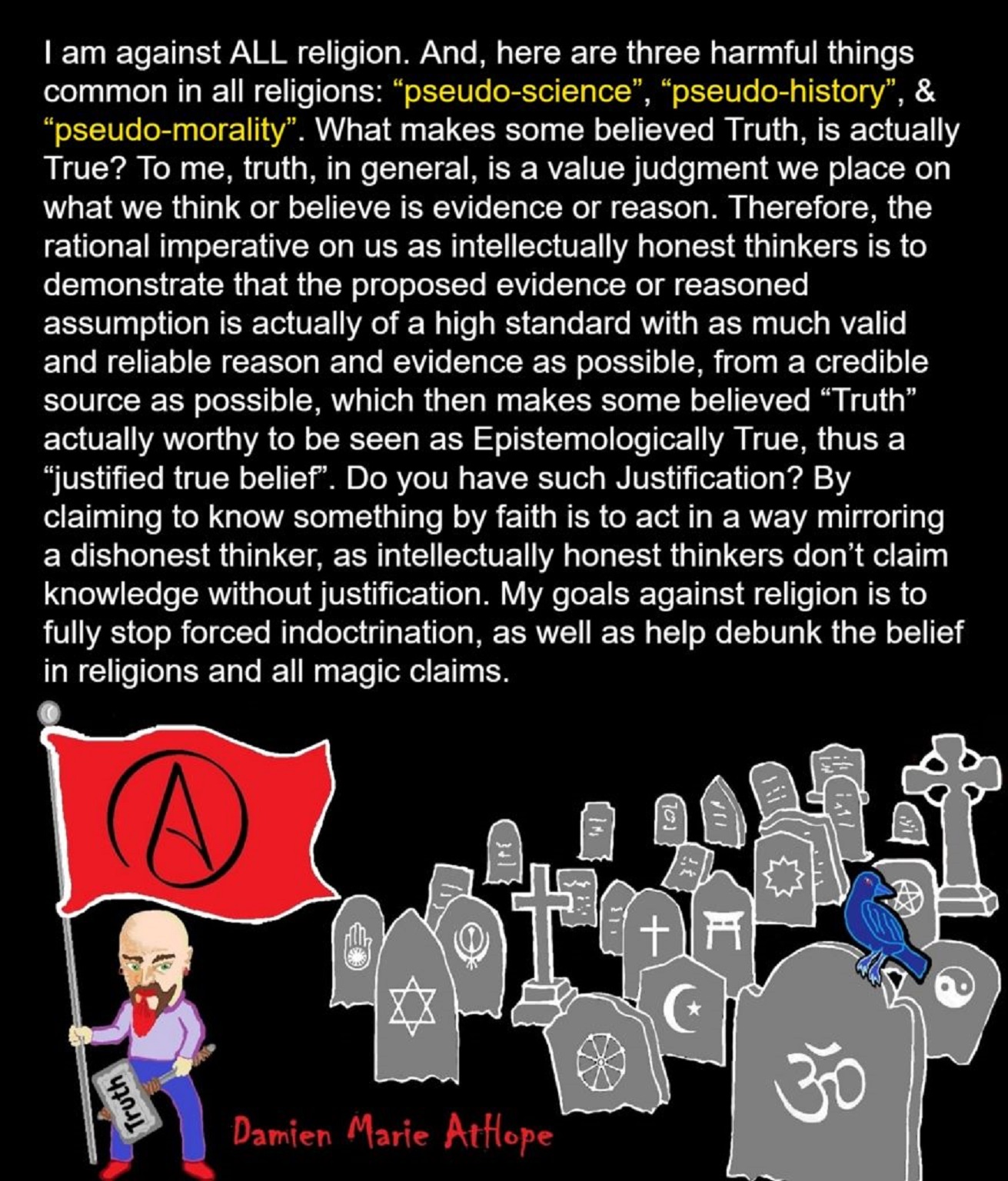

Damien Marie AtHope (Said as “At” “Hope”)/(Autodidact Polymath but not good at math):
Axiological Atheist, Anti-theist, Anti-religionist, Secular Humanist, Rationalist, Writer, Artist, Jeweler, Poet, “autodidact” Philosopher, schooled in Psychology, and “autodidact” Armchair Archaeology/Anthropology/Pre-Historian (Knowledgeable in the range of: 1 million to 5,000/4,000 years ago). I am an anarchist socialist politically. Reasons for or Types of Atheism
My Website, My Blog, & Short-writing or Quotes, My YouTube, Twitter: @AthopeMarie, and My Email: damien.marie.athope@gmail.com


